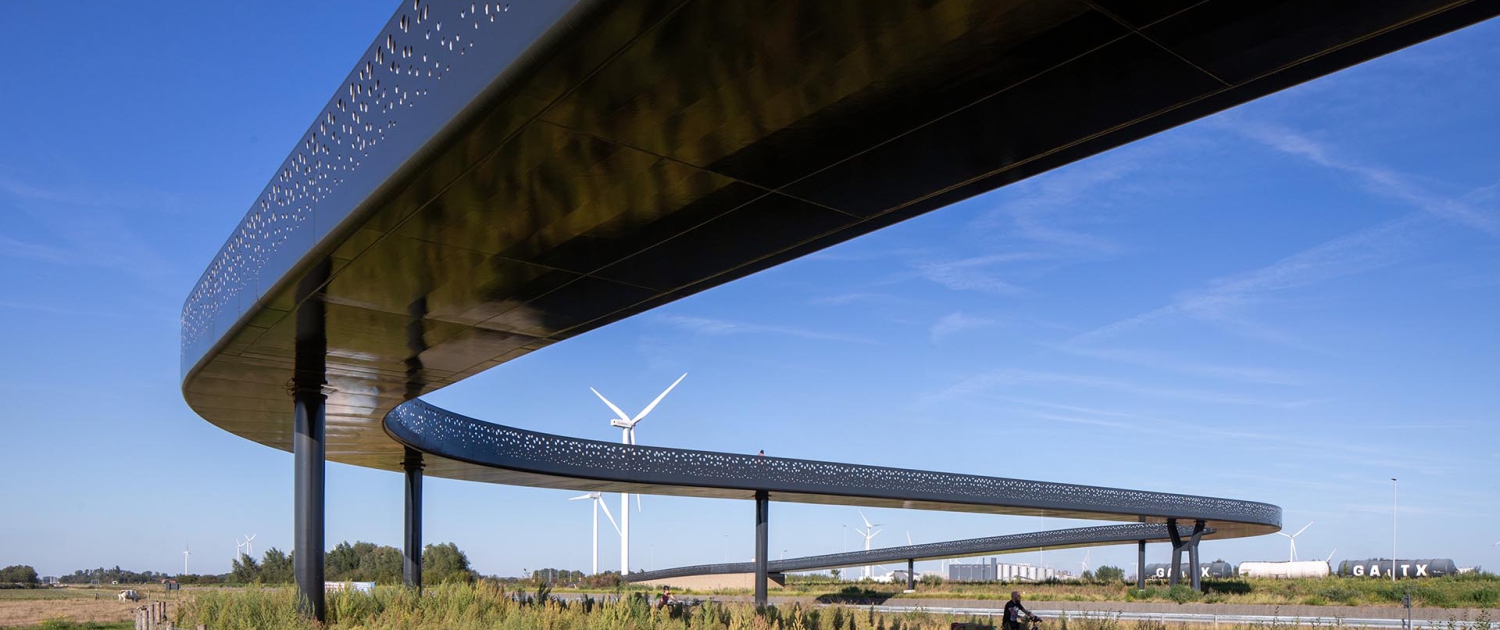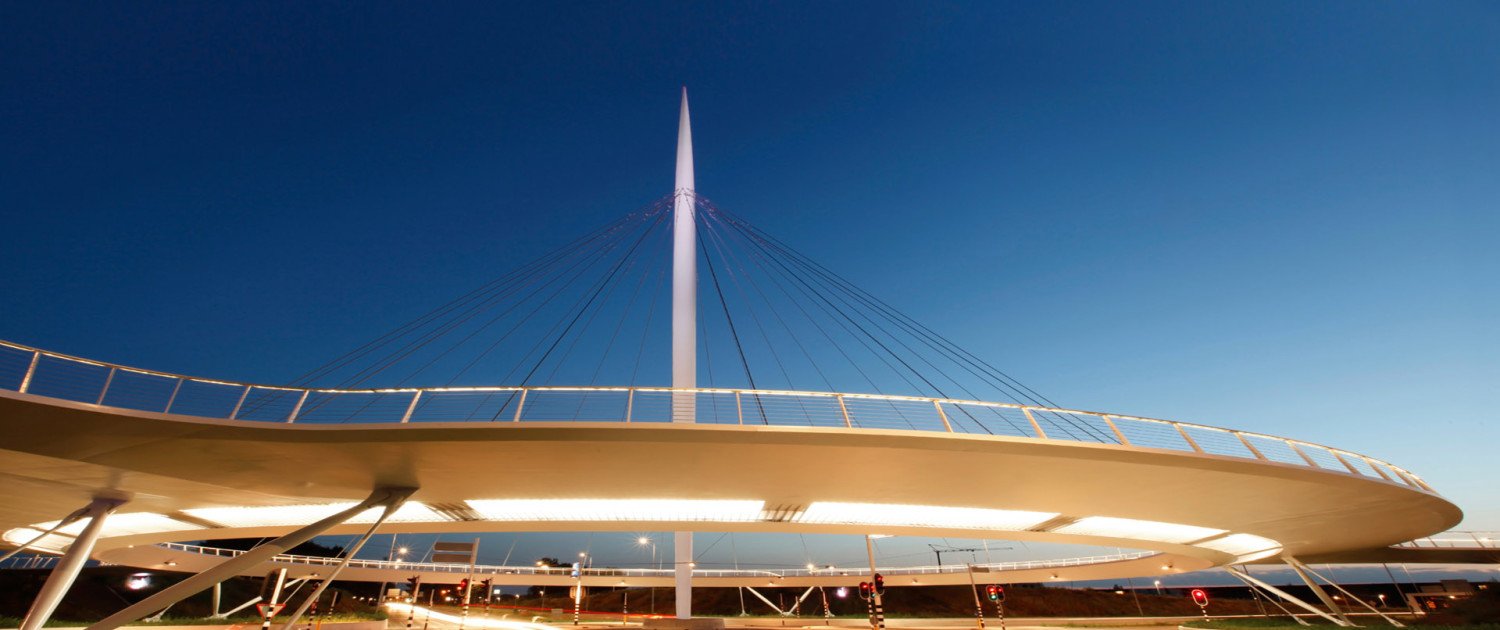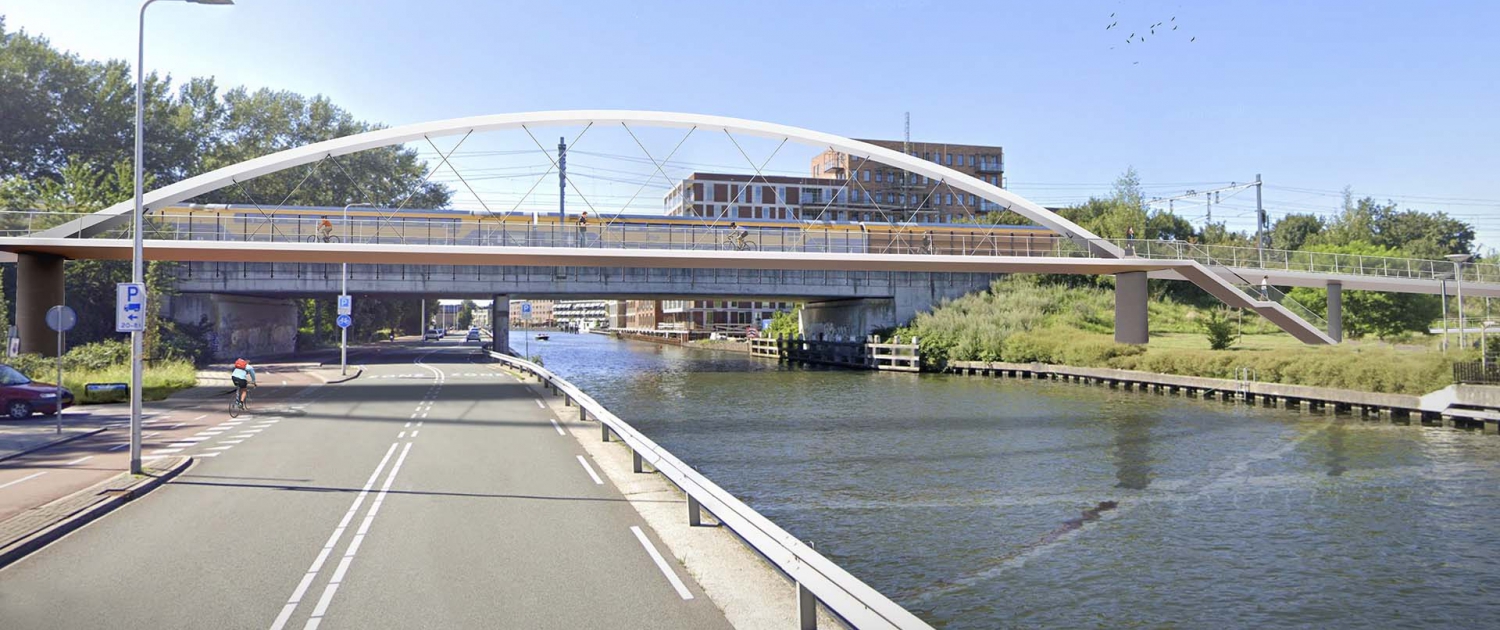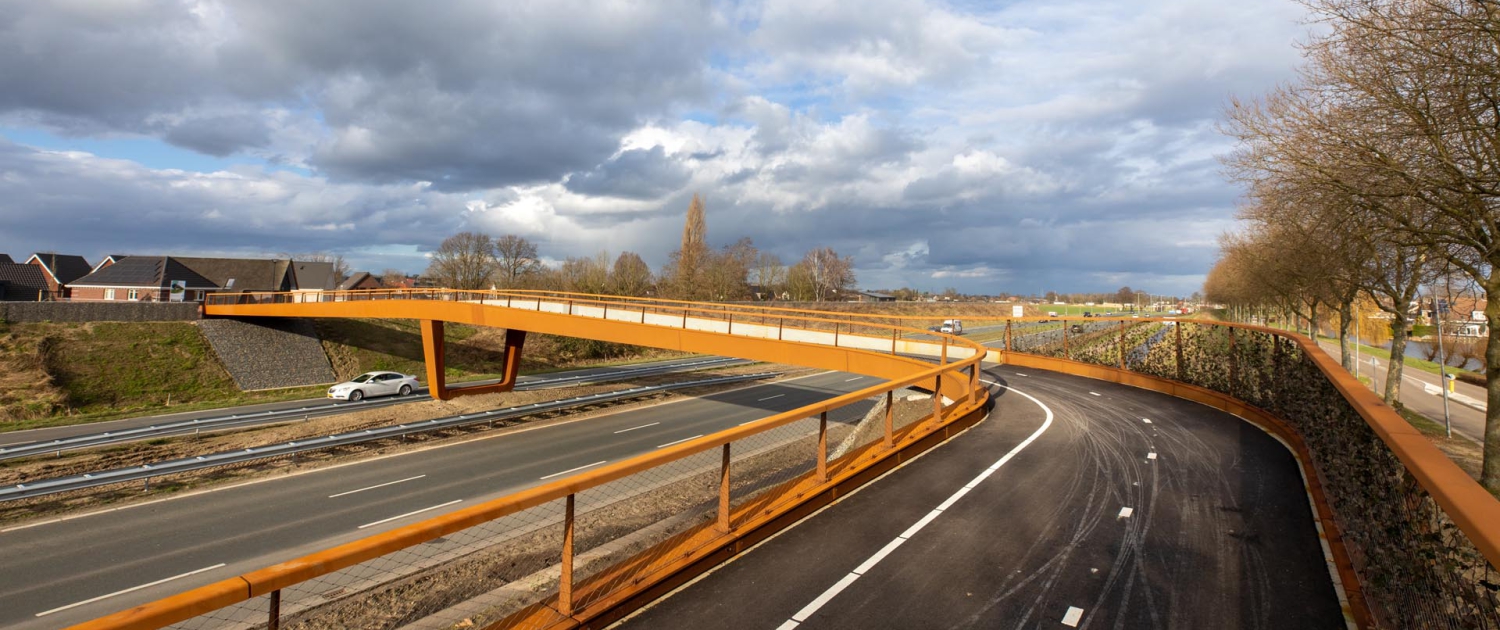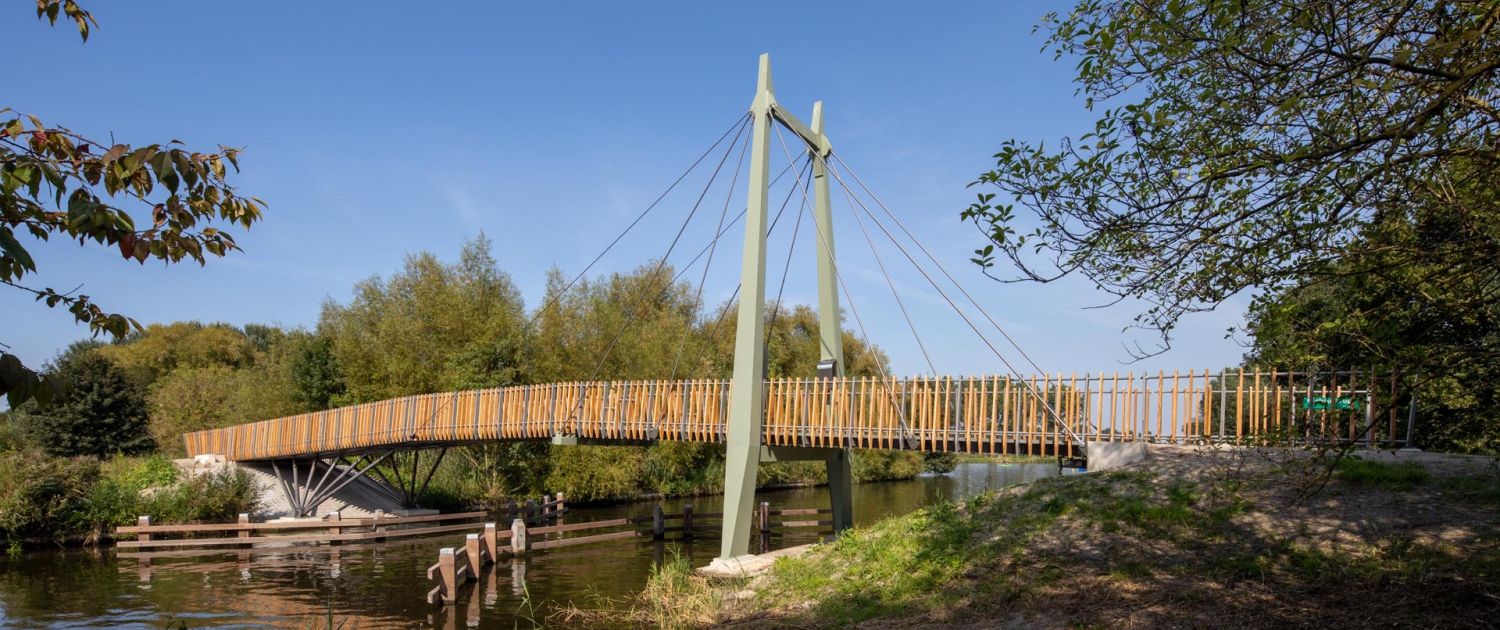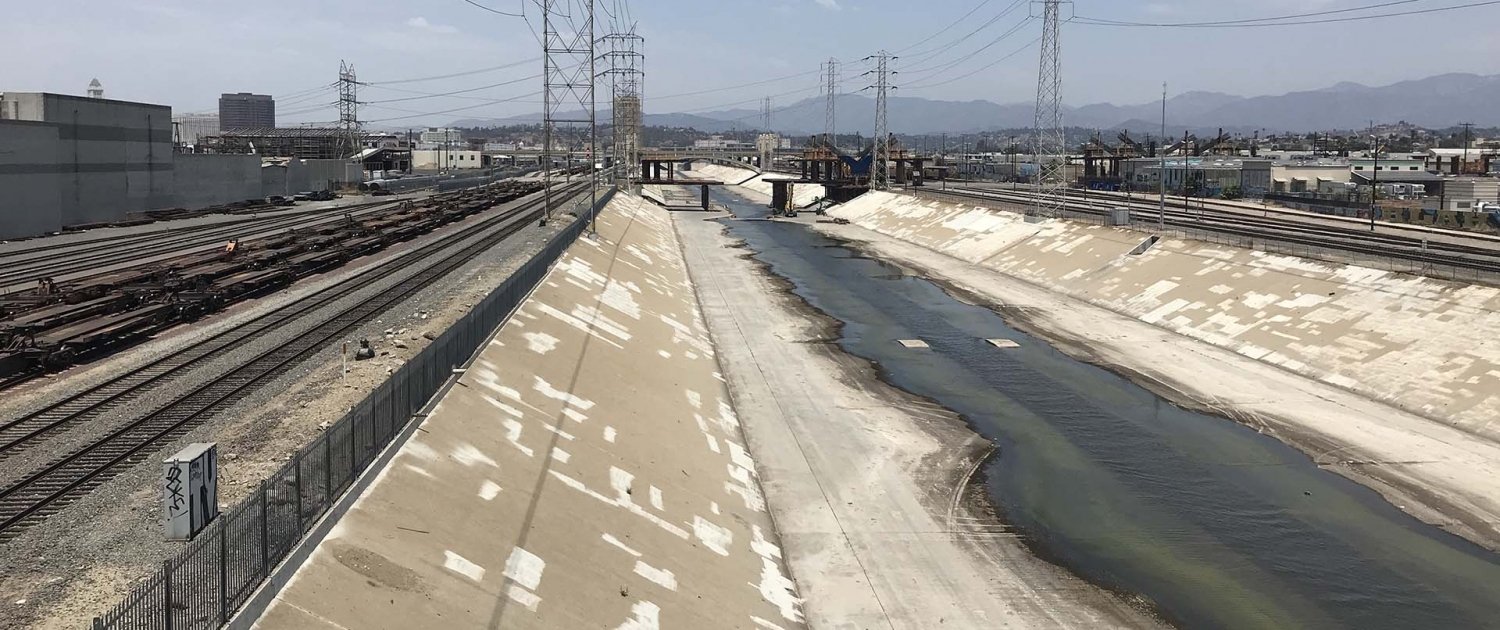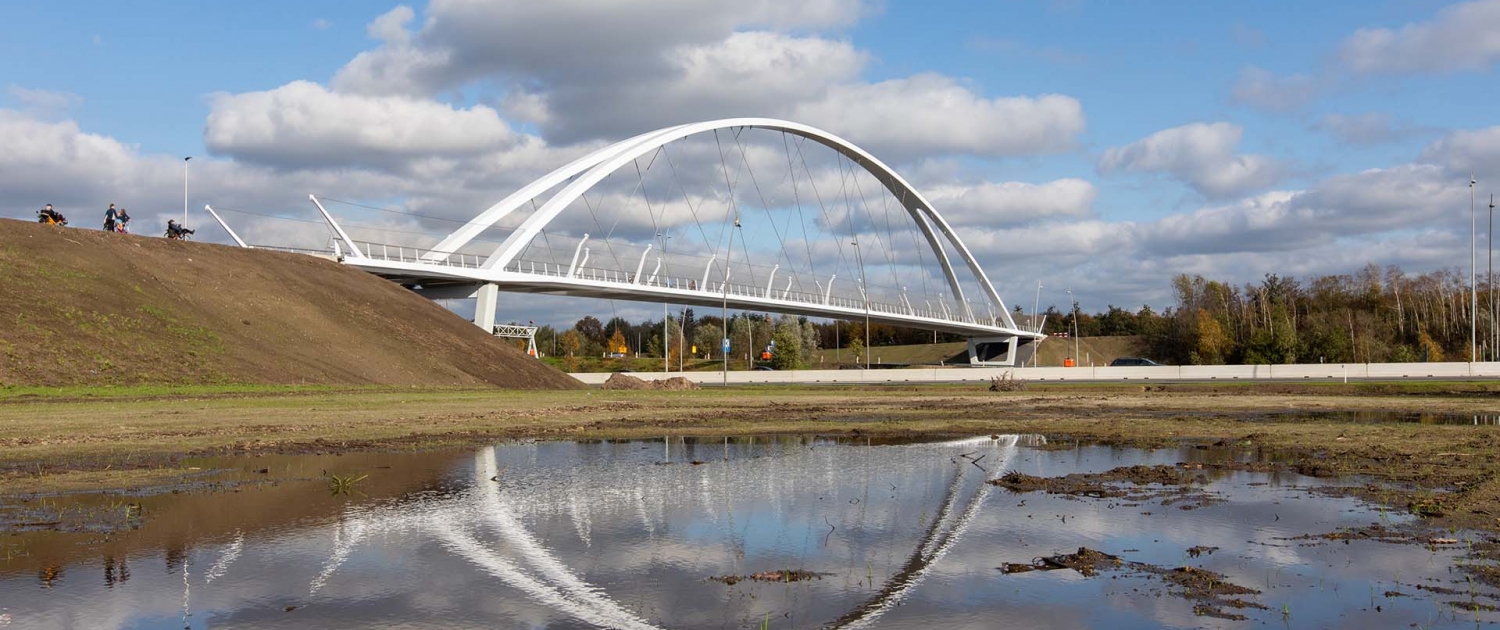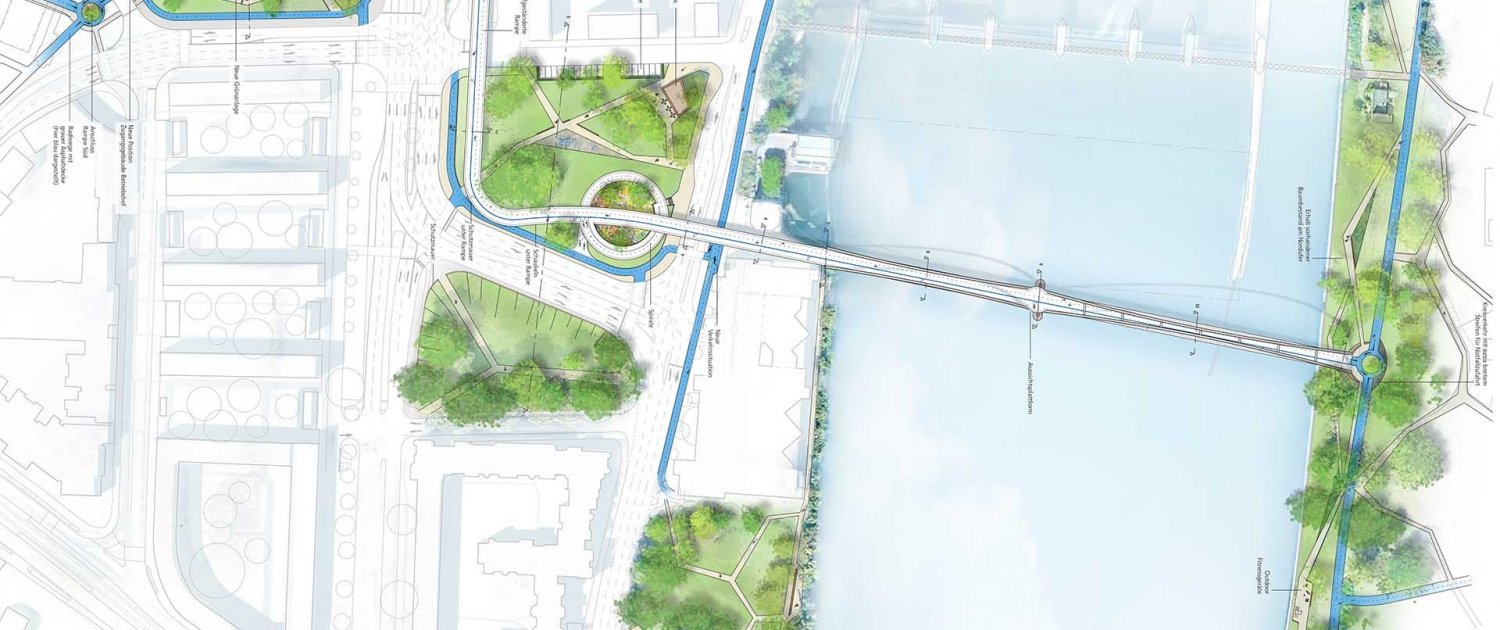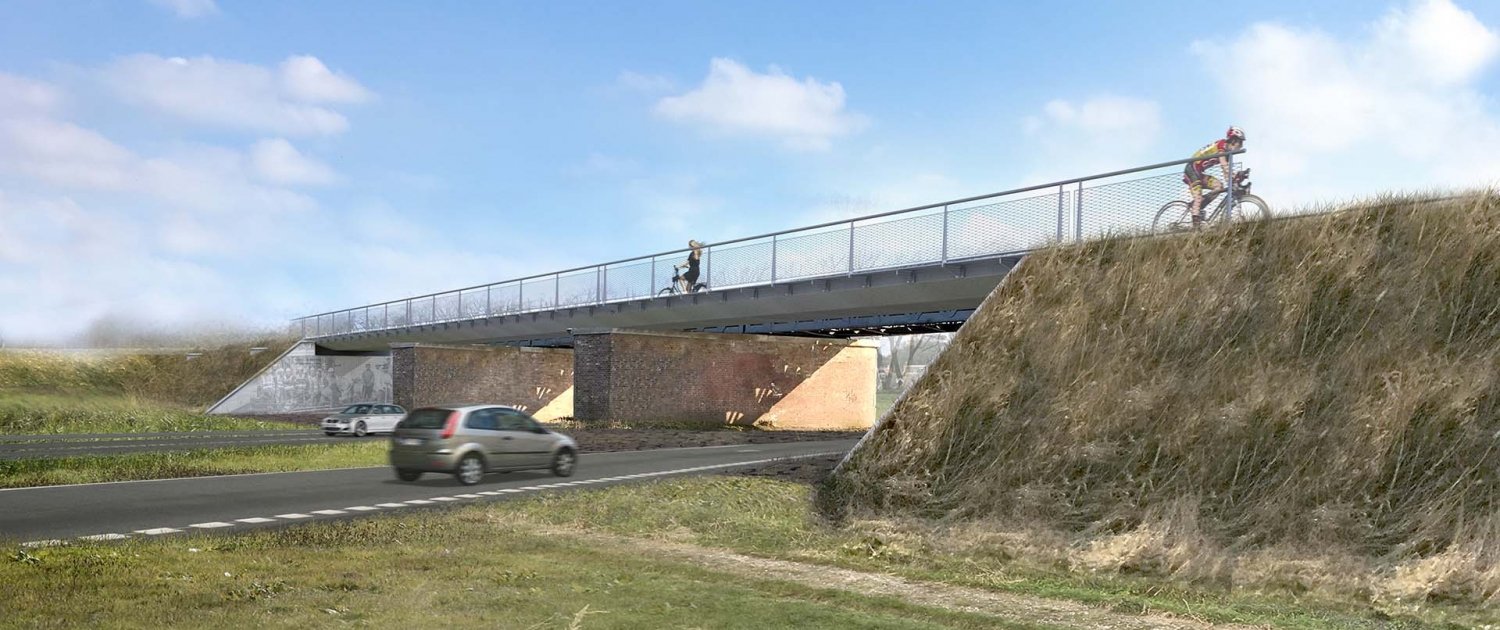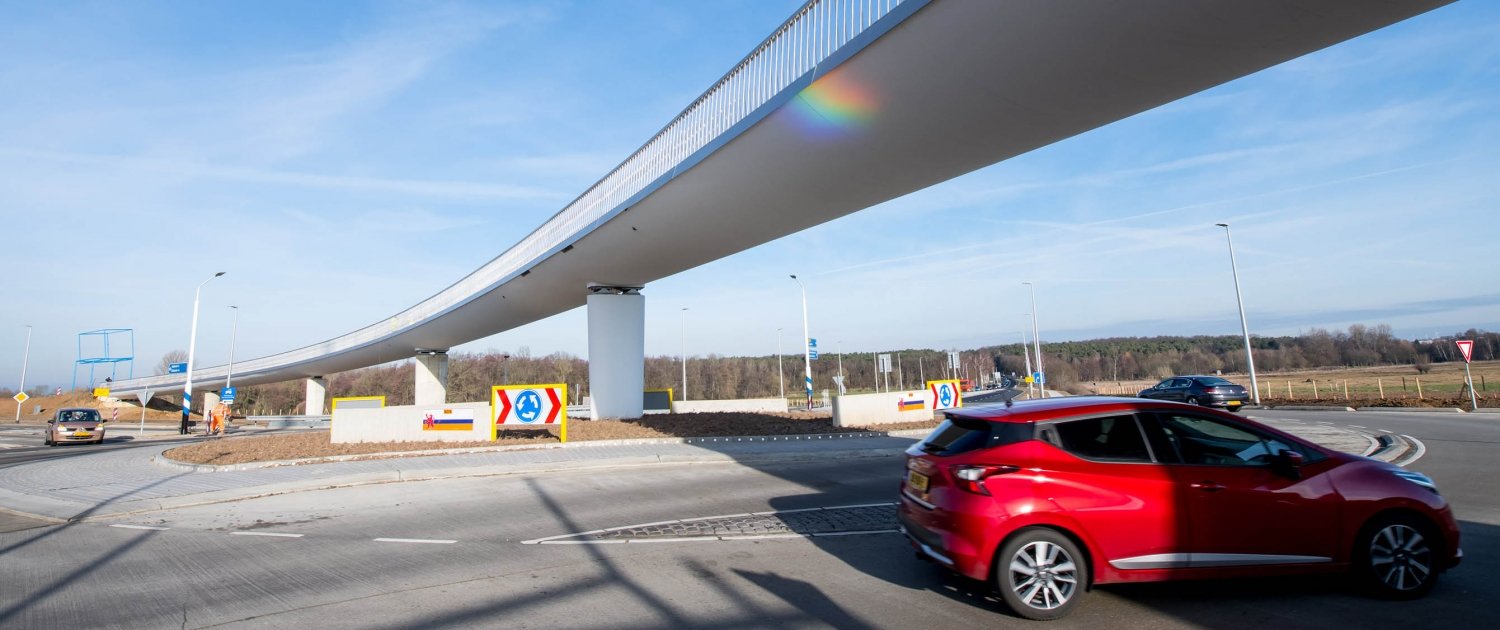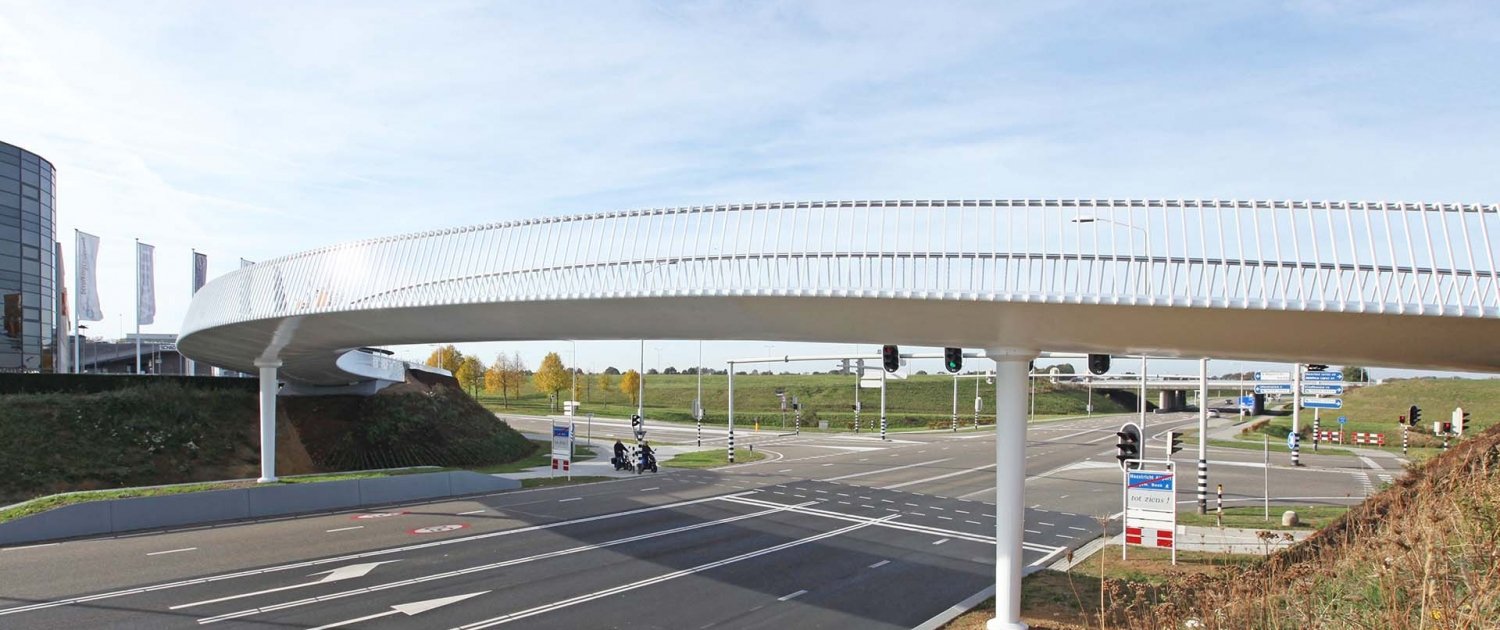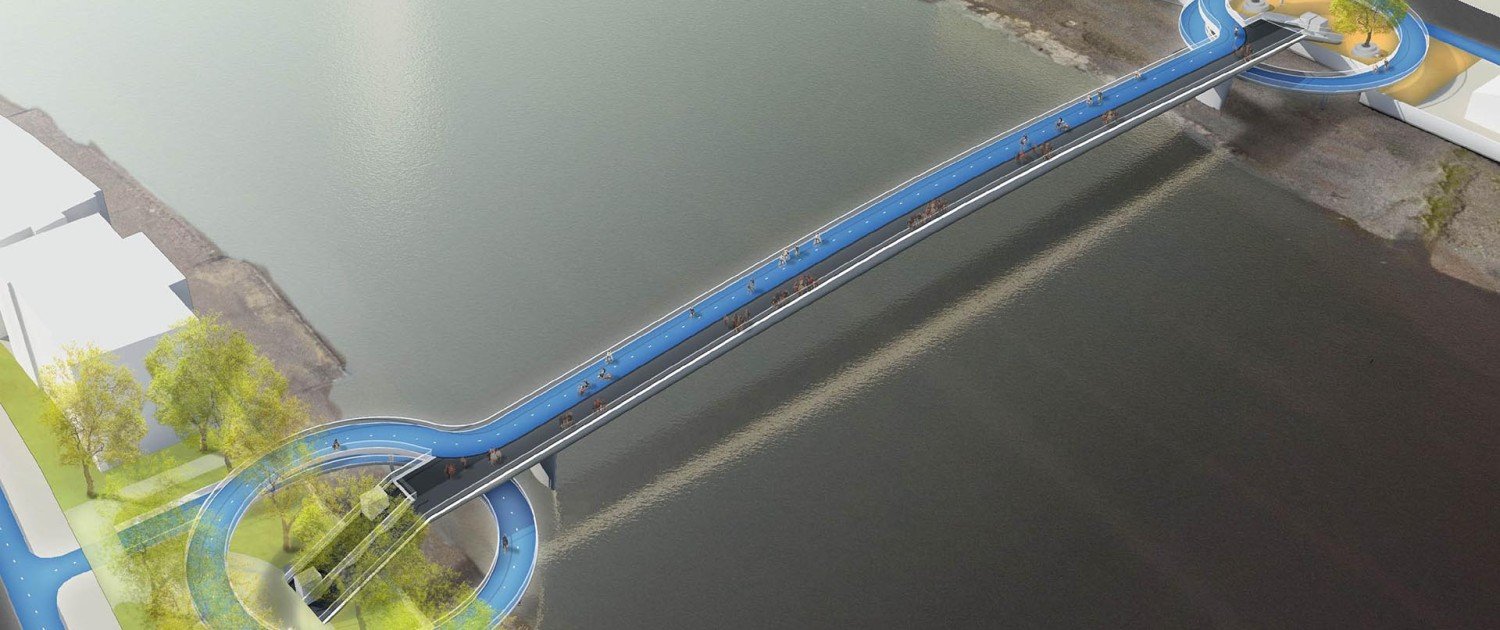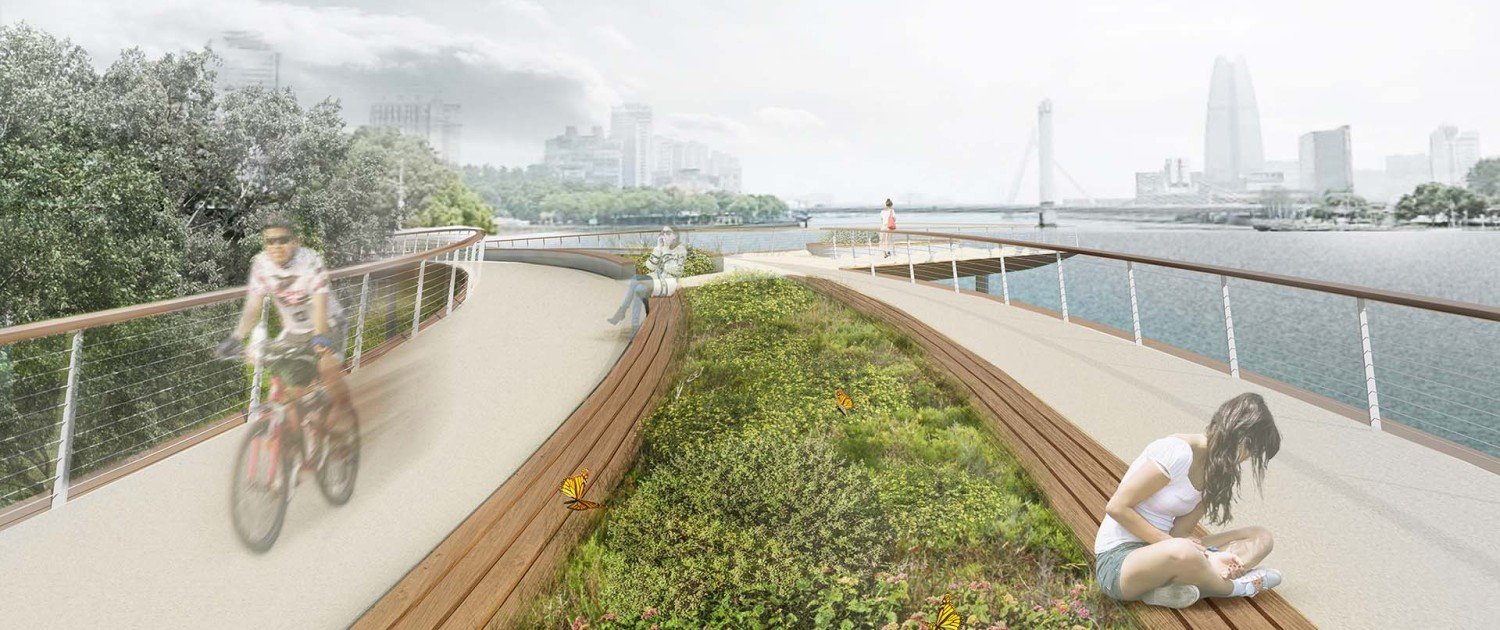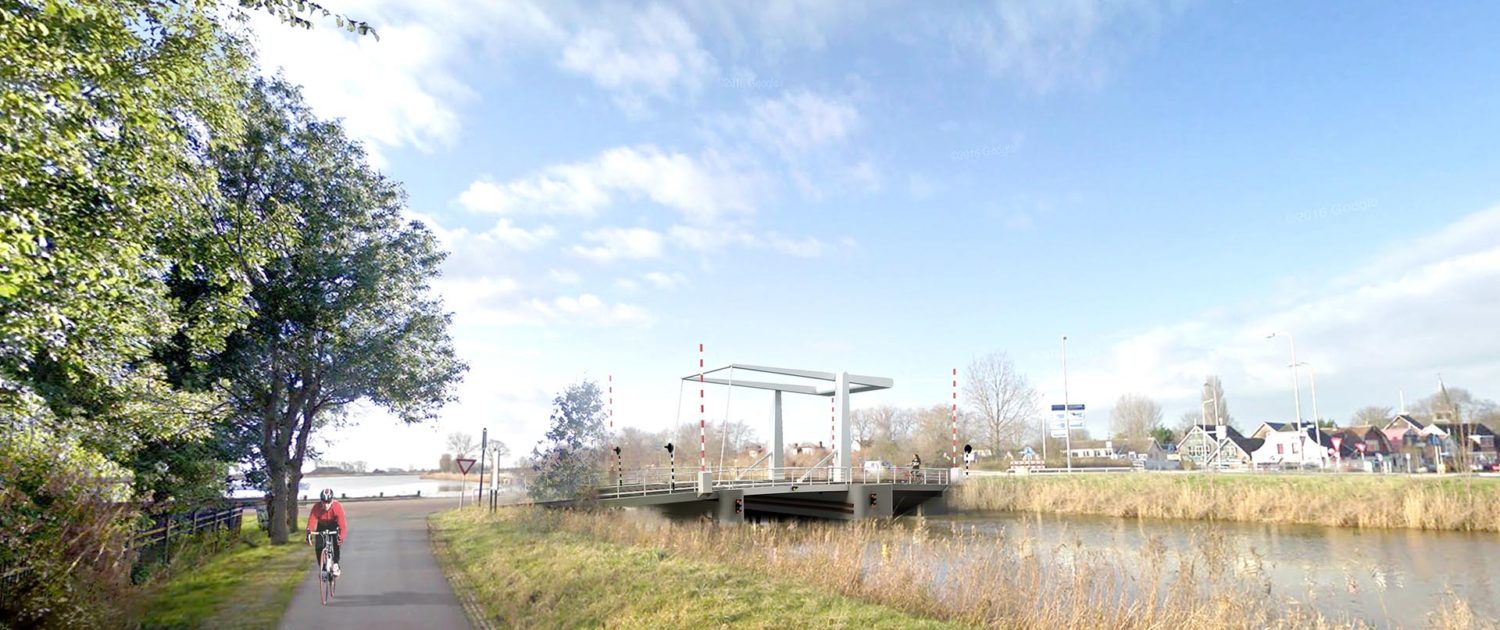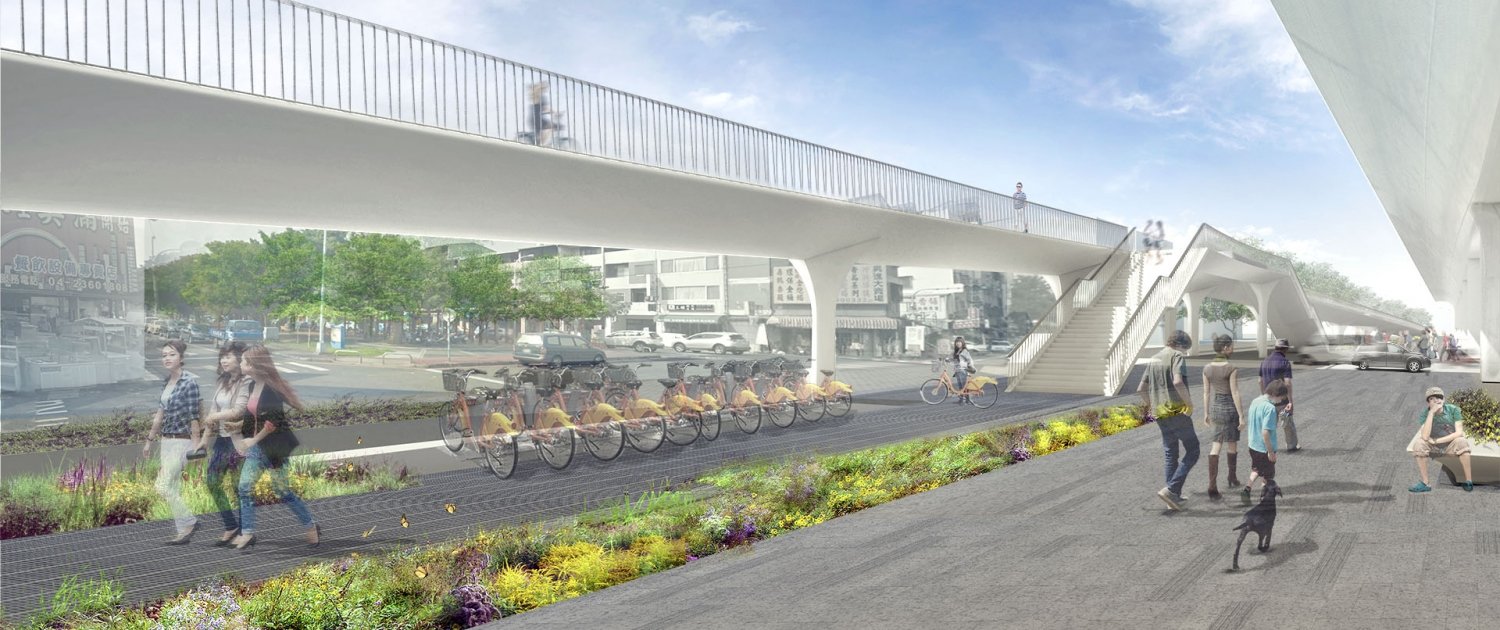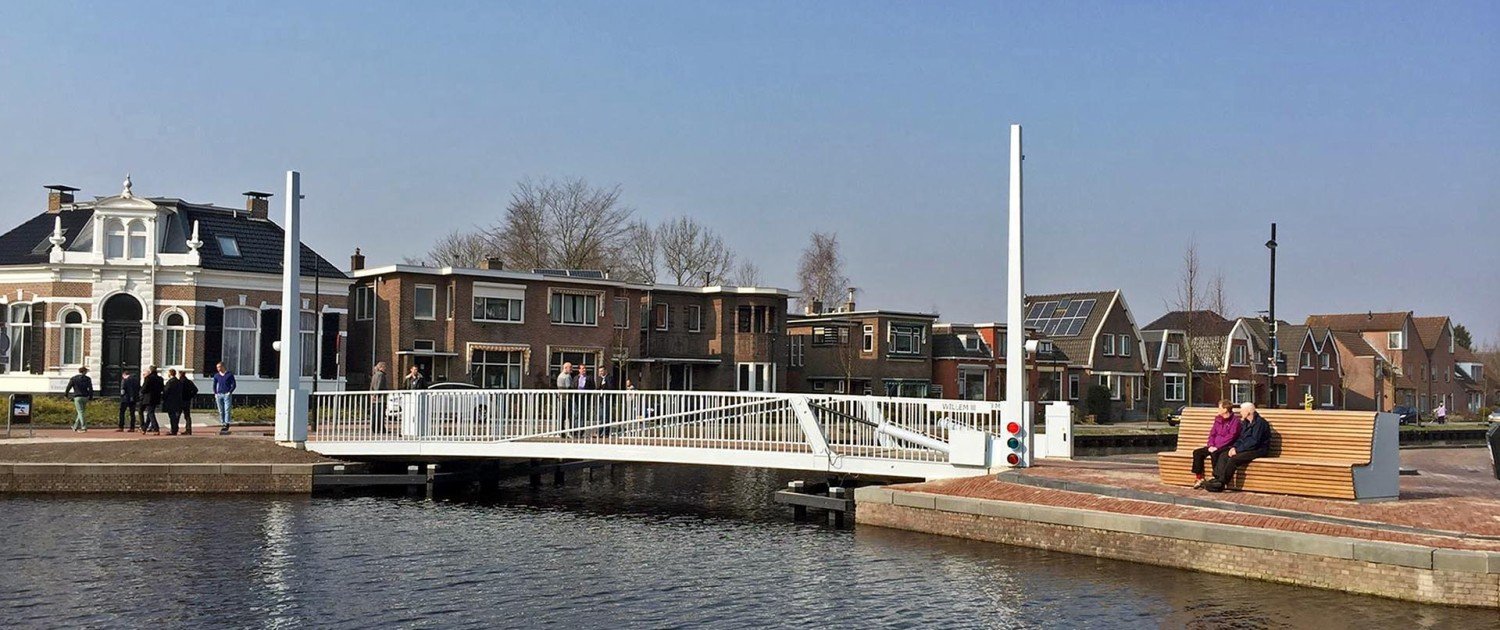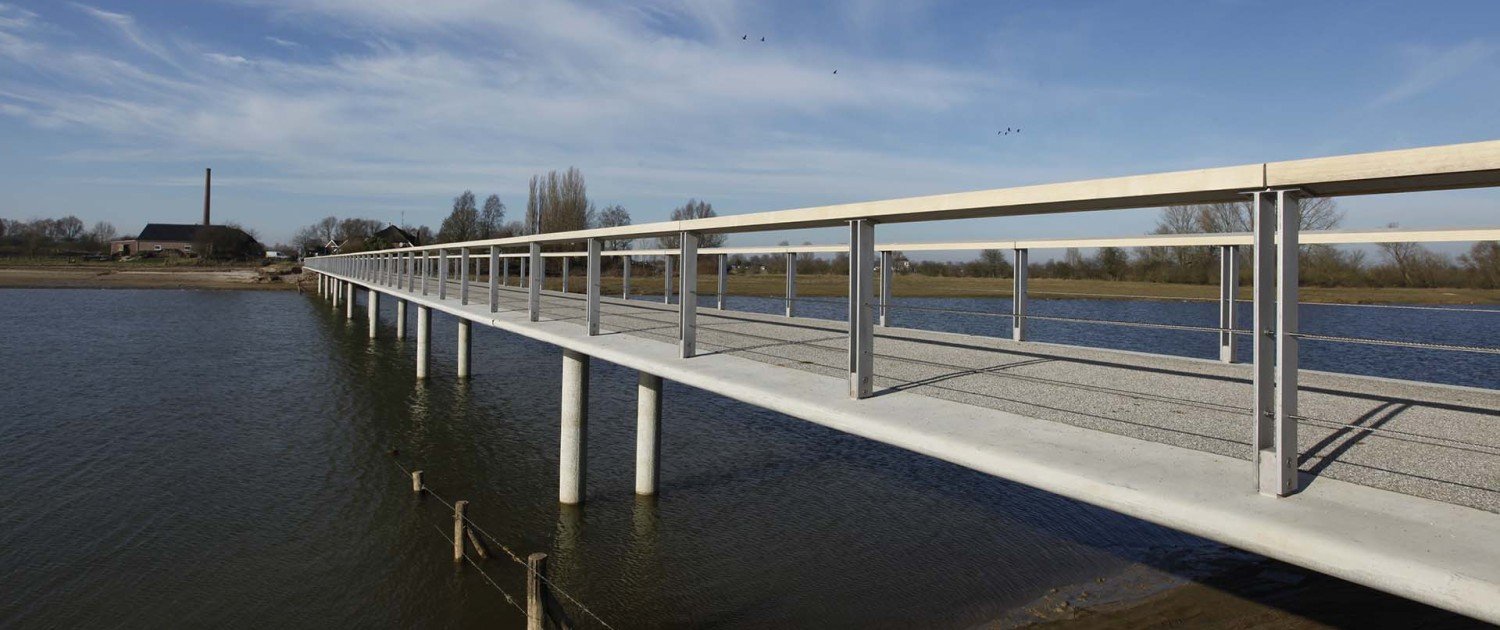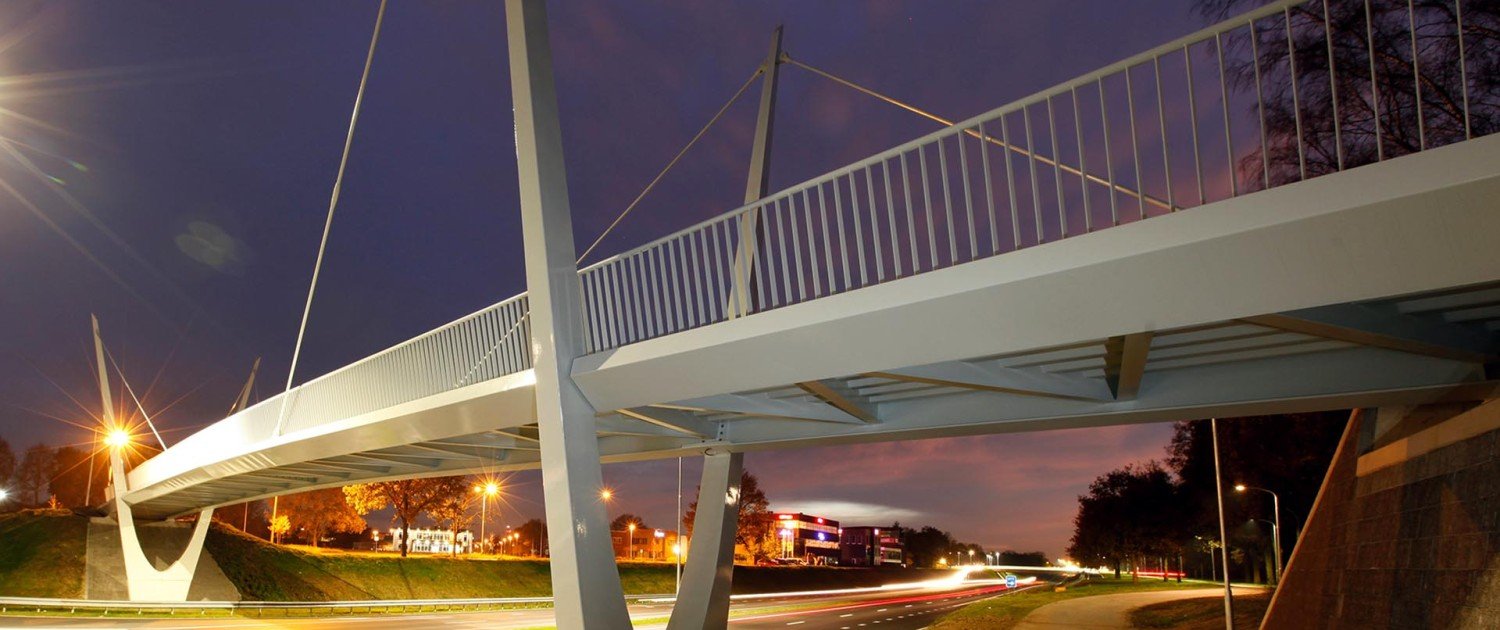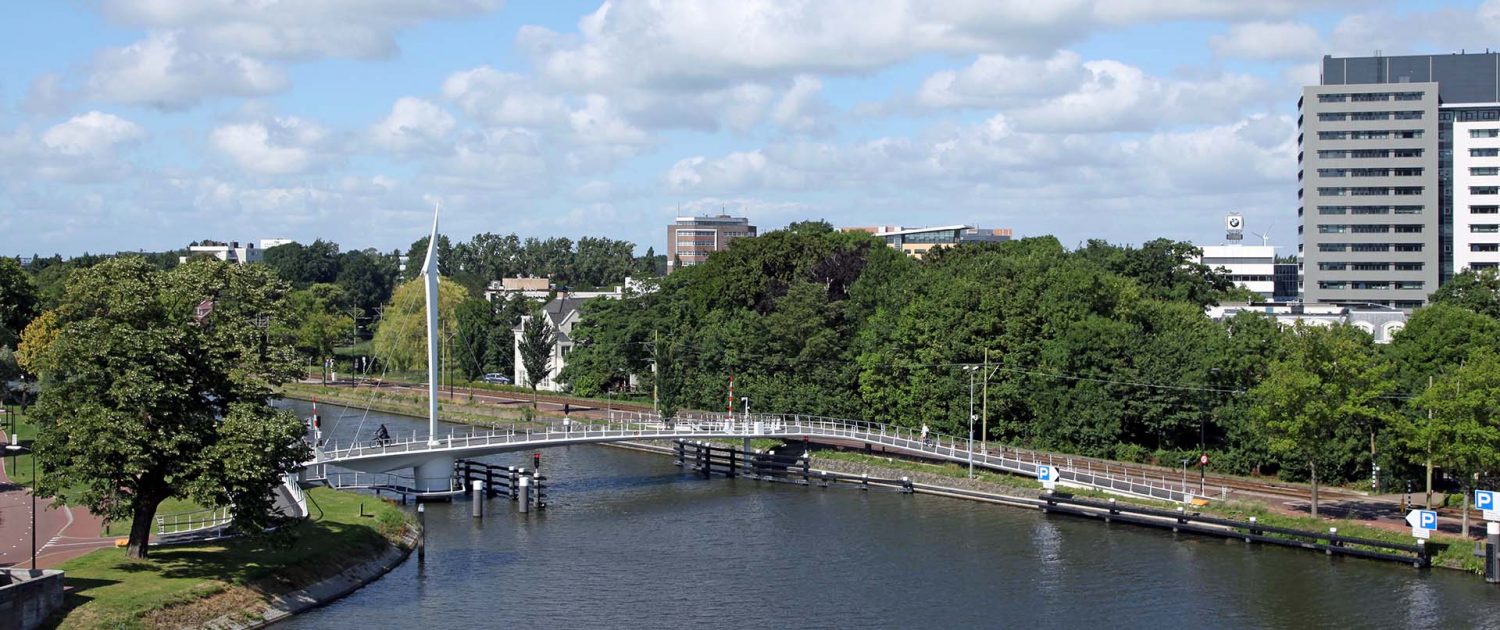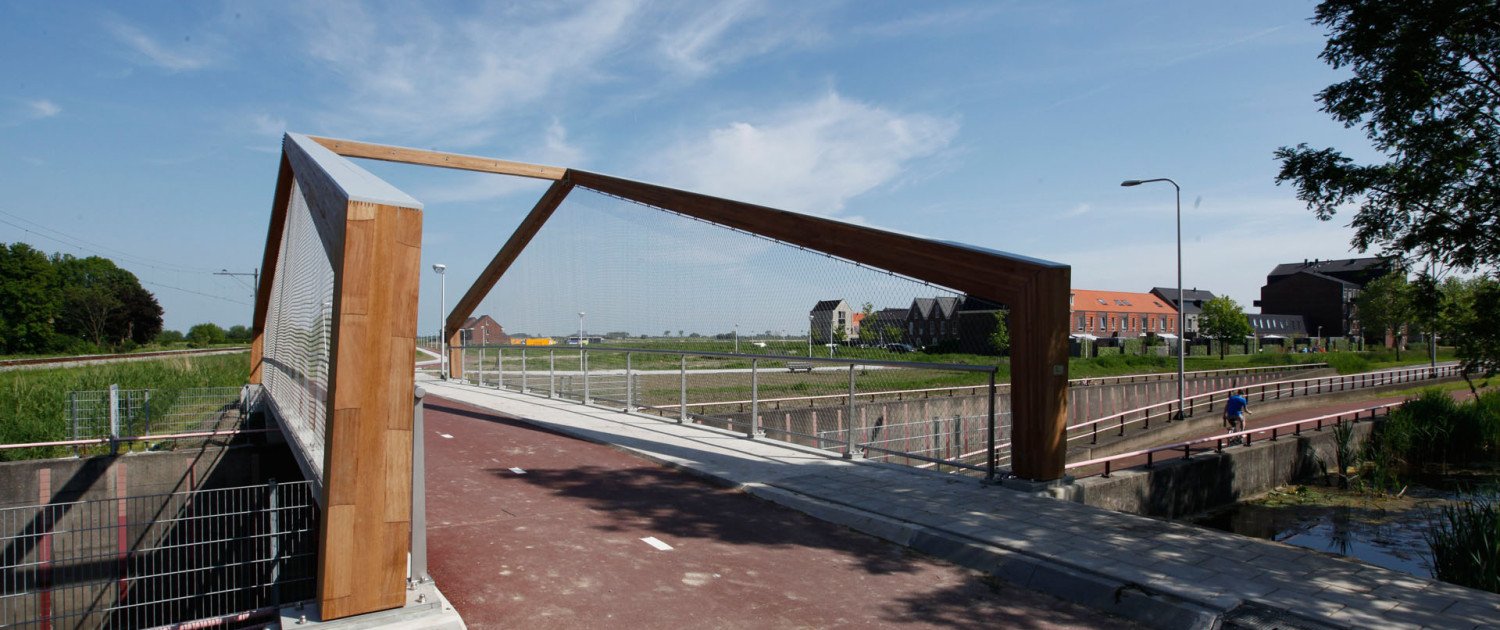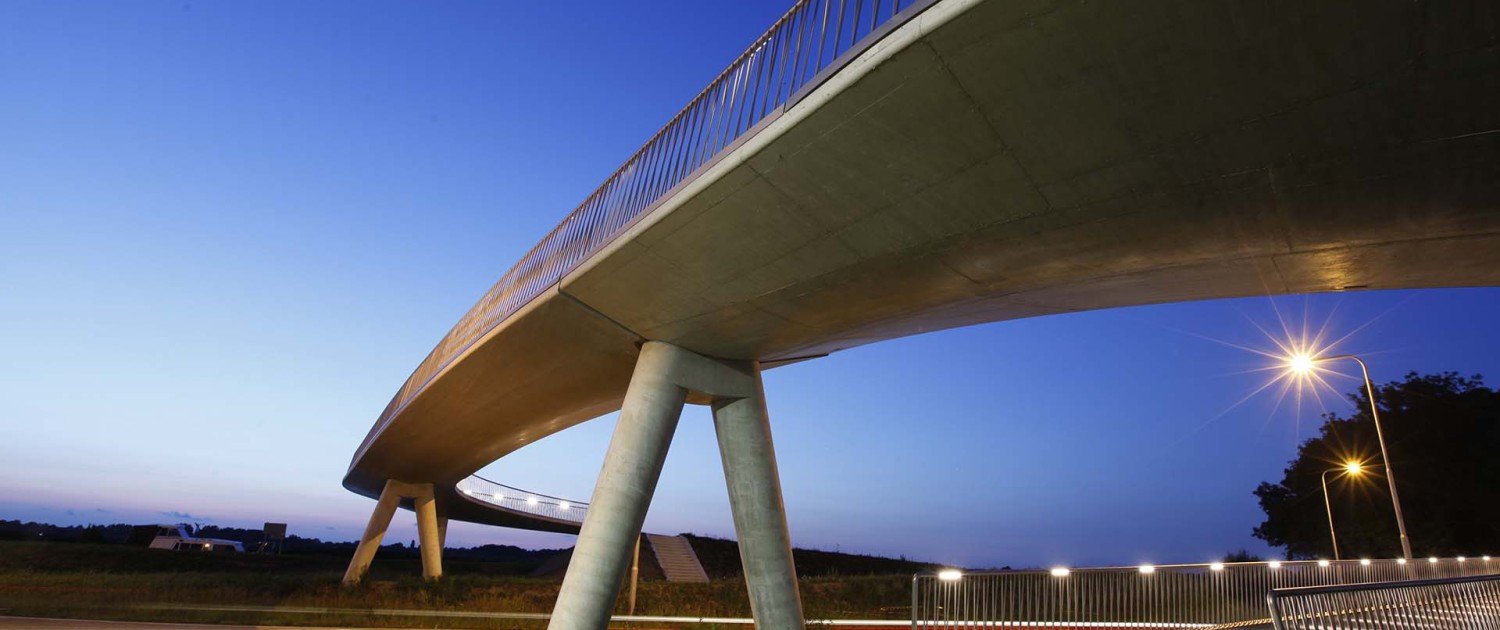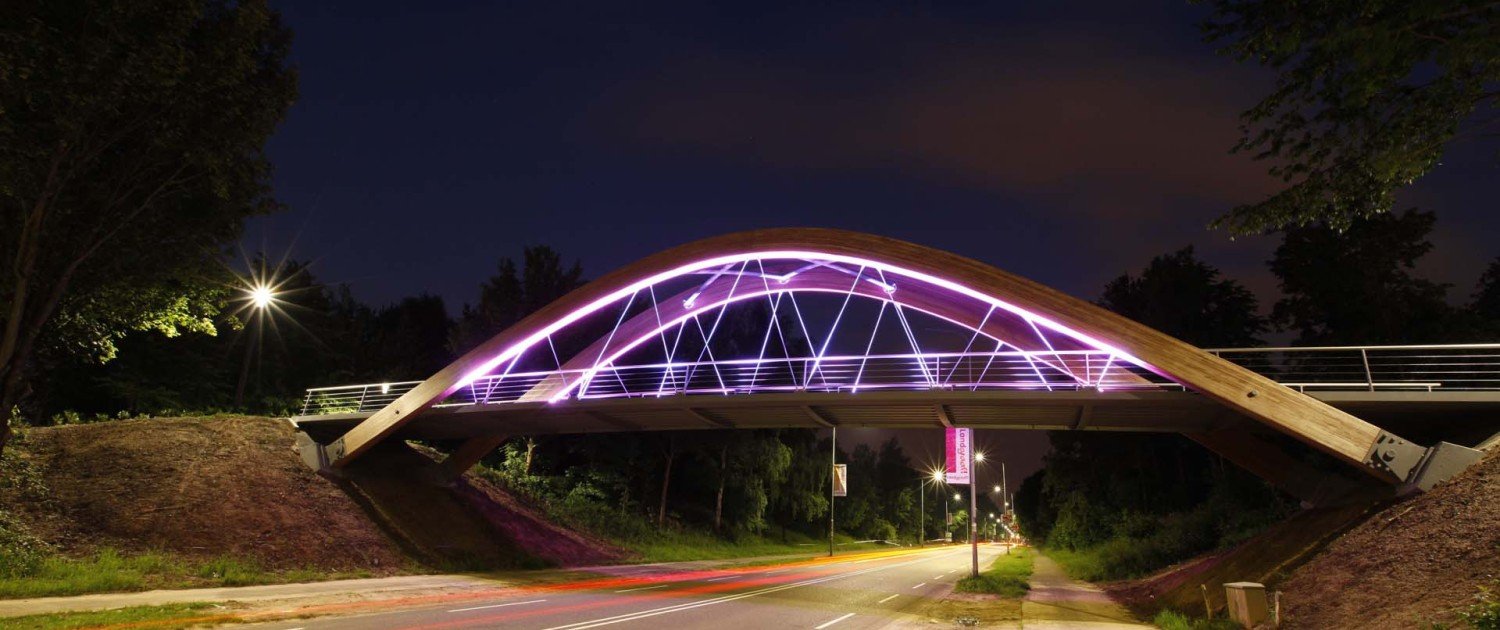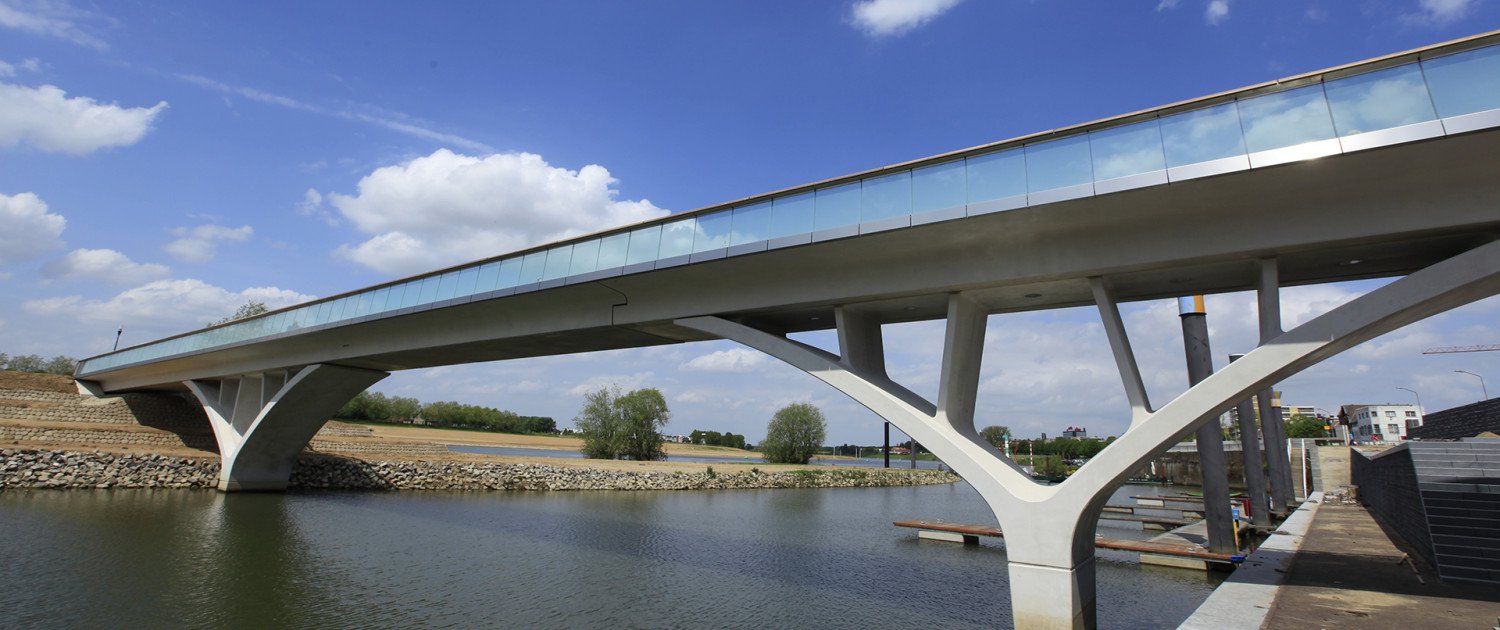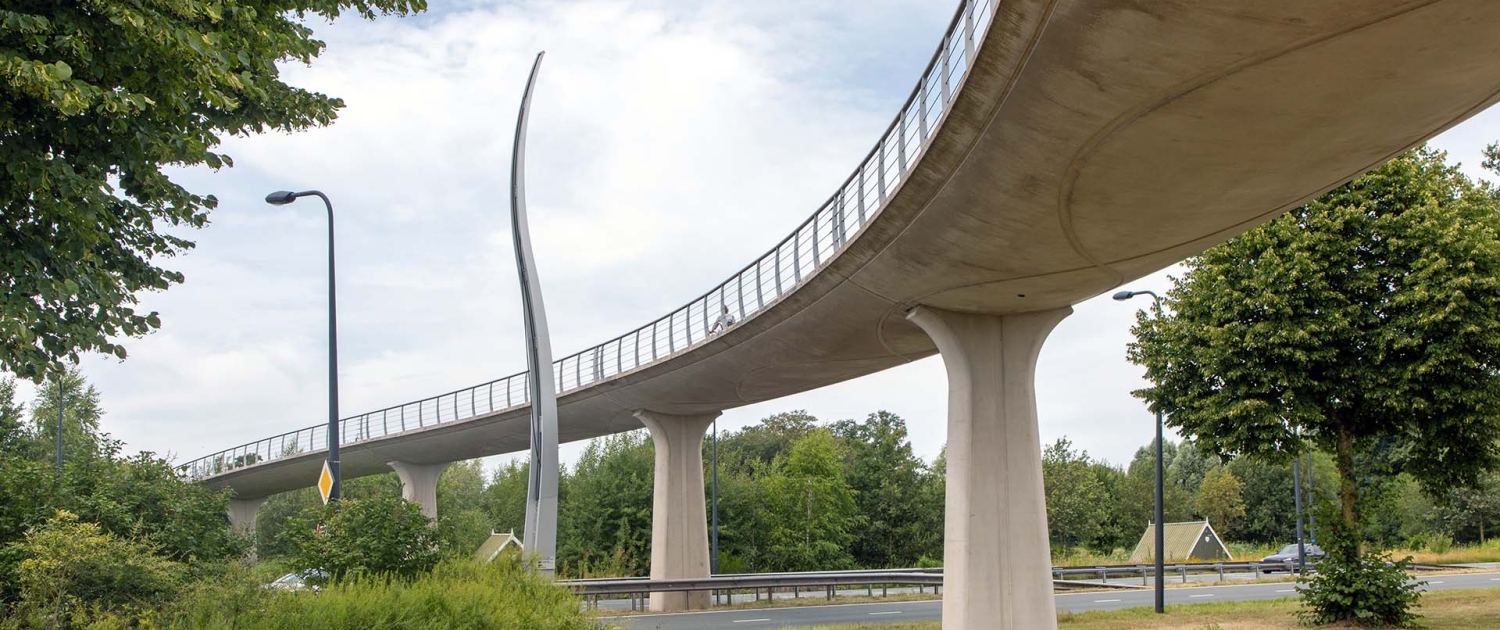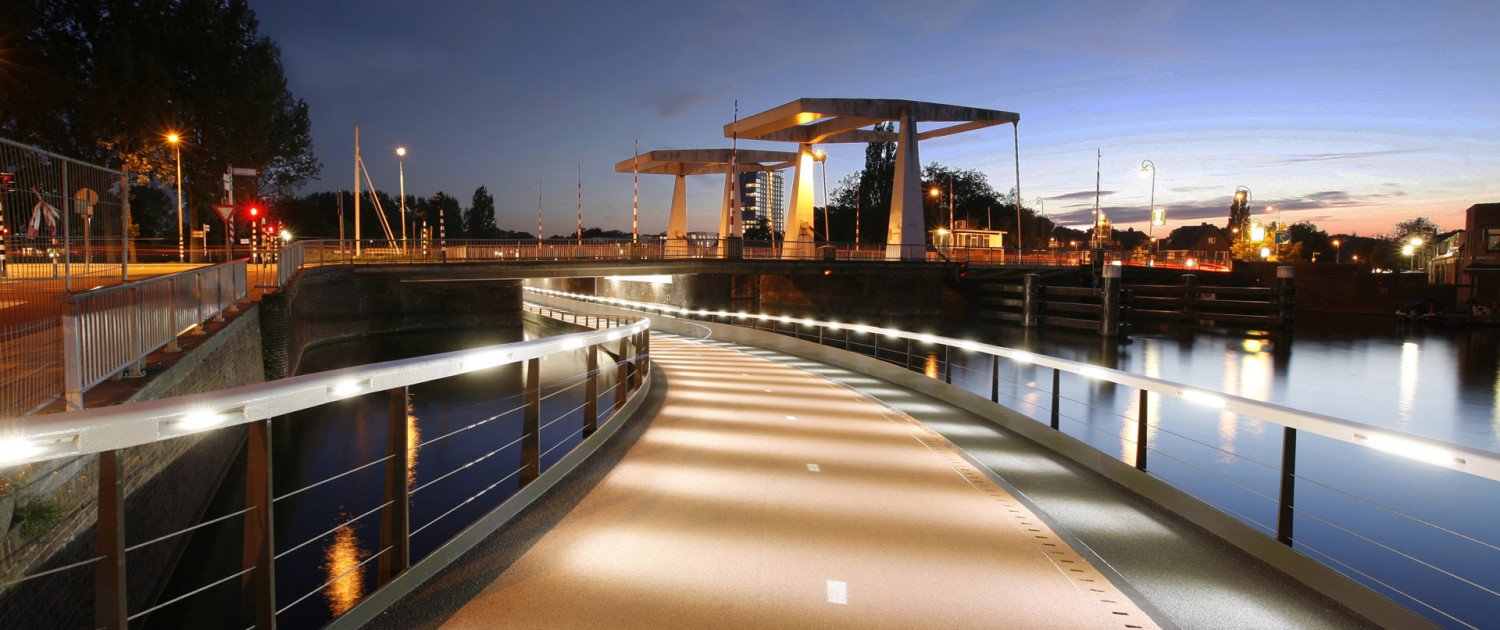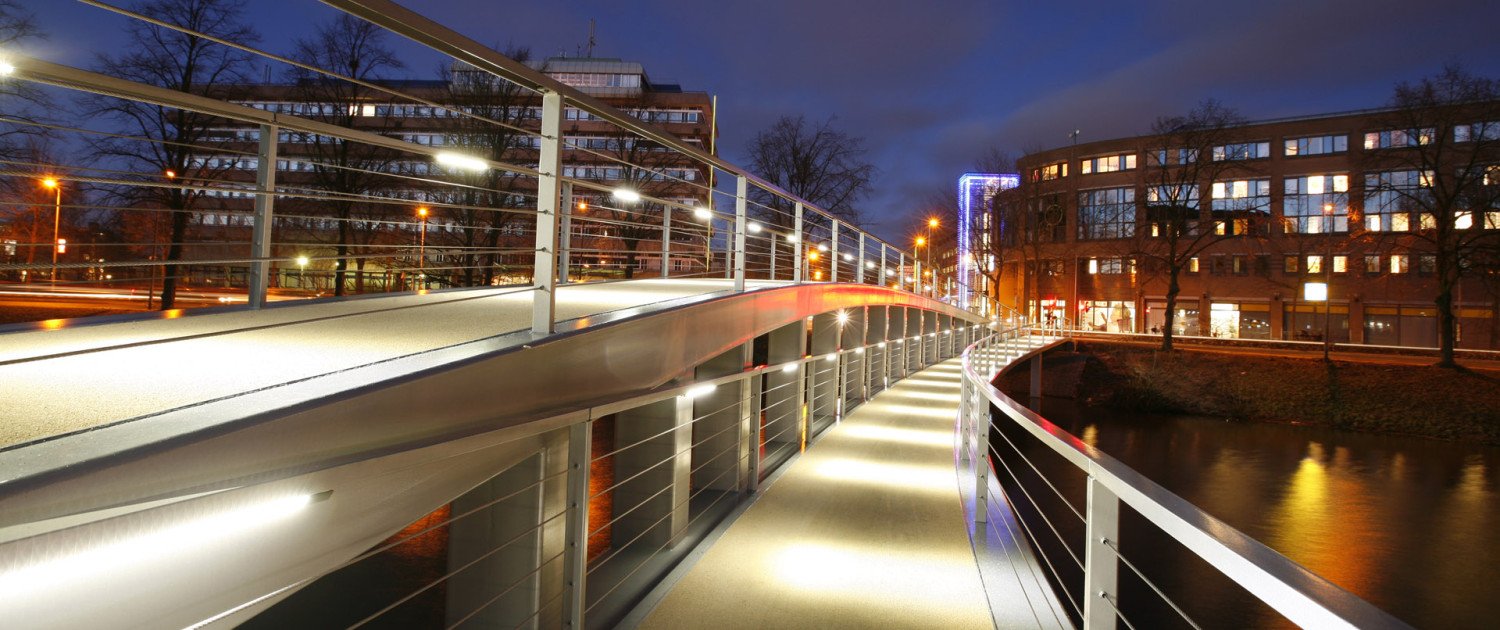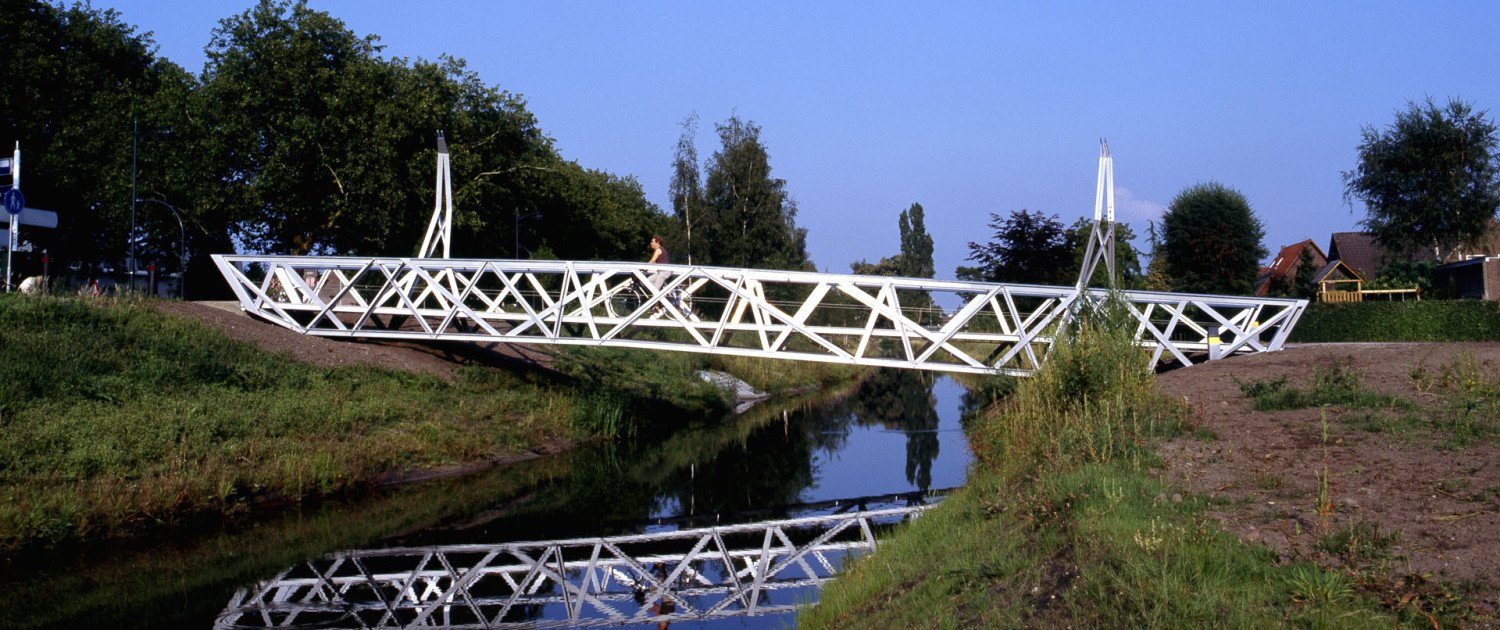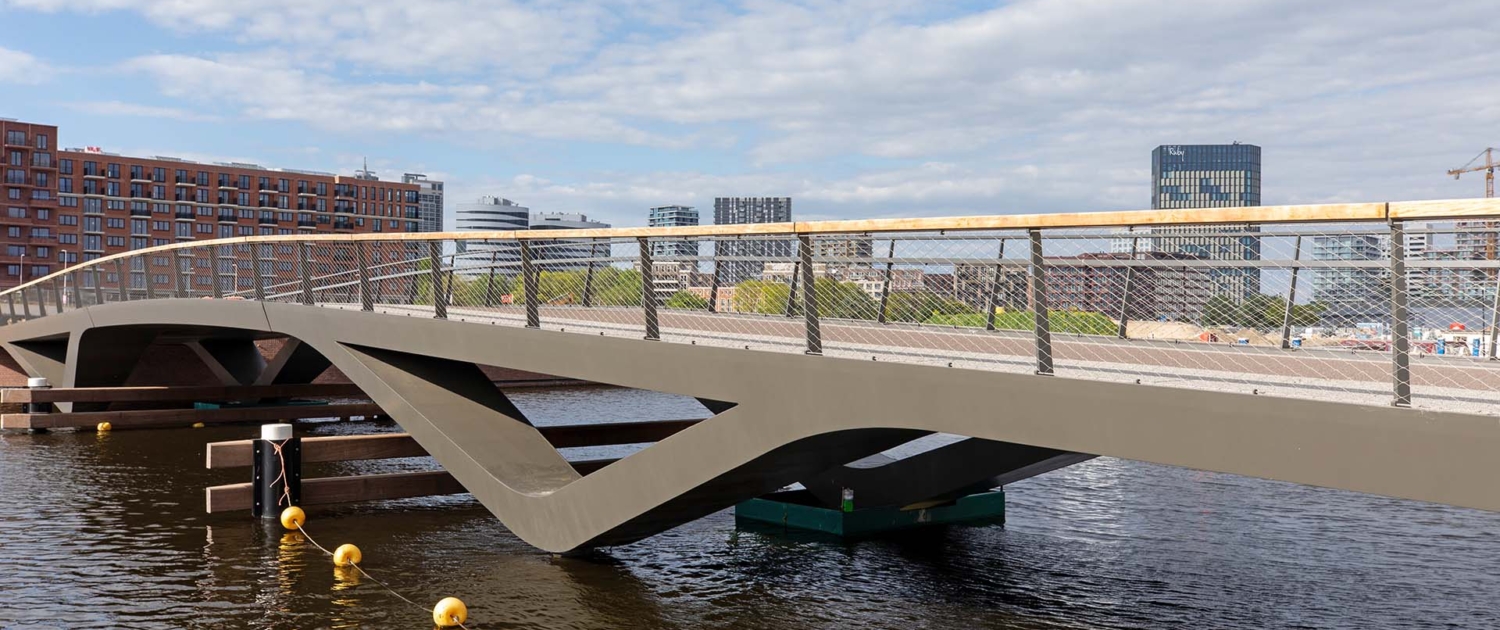
swagger
Construction of the new building developments Amstelkwartier 3rd phase and Kauwgomballenkwartier in Amsterdam Southeast is in full swing. Recently, this bicycle and pedestrian bridge along the Duivendrechtsevaart was installed, which will soon connect both neighborhoods. The design of this Meermont Bridge is bold and contemporary. And with its two different railings, the bridge even has a certain swagger about it.
autonomous design
We designed the bridge on behalf of Dura Vermeer and the municipality of Amsterdam. Inspired by the location, where former industry and contemporary urban development and architecture come together, we opted for a bold bridge with a powerful appearance. Not a bridge that is one with the adjacent quays, as in the historic city center, but rather a modern design that stands autonomously between the quays. This autonomous position is clearly reflected in the detailing of the bridge at the landings. Where a bridge deck normally extends across the abutment, a clear dividing line has been chosen here. The railing design changes subtly as soon as the bridge touches the quay, and the curvature of the quay walls is clearly visible within the bridge deck. The bridge deck has been deliberately given a different color from the connecting (red) cycle path, also to emphasize its autonomy.
steel box girder
The 48-metre-long bridge consists of a fully enclosed steel box structure with V-shaped supports that are an integral part of this structure. Not only are the V-shaped supports an efficient structural solution that allows for a slender overall structure, it also makes it pretty clear where vessels are allowed to pass.
In cross-section, the sides of the bridge are at a slight angle. The supports disappear slightly below the deck, while the railings protrude outwards. This creates an inviting and neat appearance.
non-identical bridge railings
In addition to the sleek appearance of the Meermont Bridge as a whole, something else stands out: the railings are not identical. Since July 2021, the rule for cycle and pedestrian bridges is that a railing directly adjacent to a cycle or moped path must have a minimum height of 1.3 metres. If the railing is next to a footpath or pavement, the minimum height is 1 metre. This prompted the designers to play with two different types of railing on this bridge. The footpath runs along the Duivendrechtsevaart canal. Here, the handrail is 1 metre high. A lower handrail offers a better view of the water and is more pleasant for pedestrians. The use of a wooden handrail also creates a softer and more inviting appearance.
transparency
The railing on the other side, along the cycle path, is made entirely of steel. On top of the base, which is also on the pedestrian side, a steel rail has been added, bringing the total height of the railing to 1.3 metres. The base railing has been designed to be as transparent as possible and consists of steel balusters and stainless steel mesh infill that has been carefully tensioned for a sleek result.
specifications
partners: Dura Vermeer, Bersselaar Constructie
dimensions: l=48 m | w=7 m
completion: 2025
more information?
call Ivo Mulders:
+ 31 15 750 25 73

project team
Niels Degenkamp
Ivo Mulders
Rutger Wirtz
Gavin Wallace
share this project:
similar projects



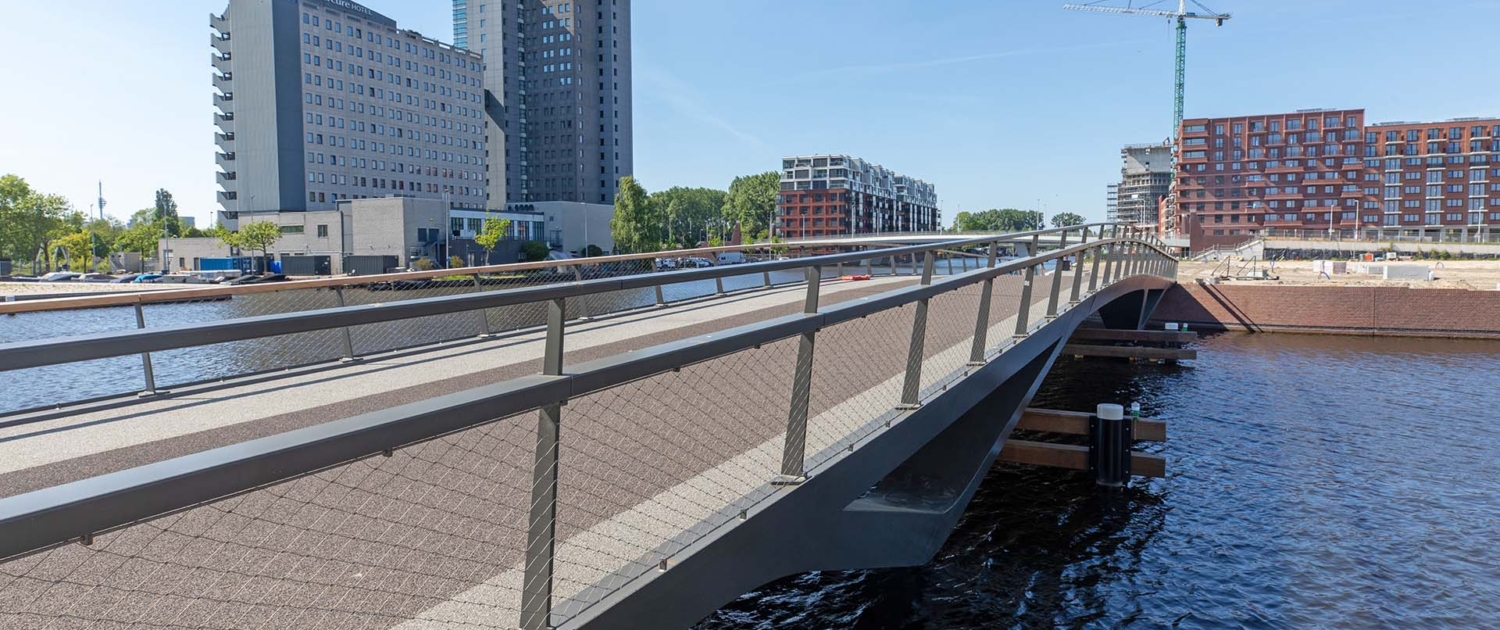
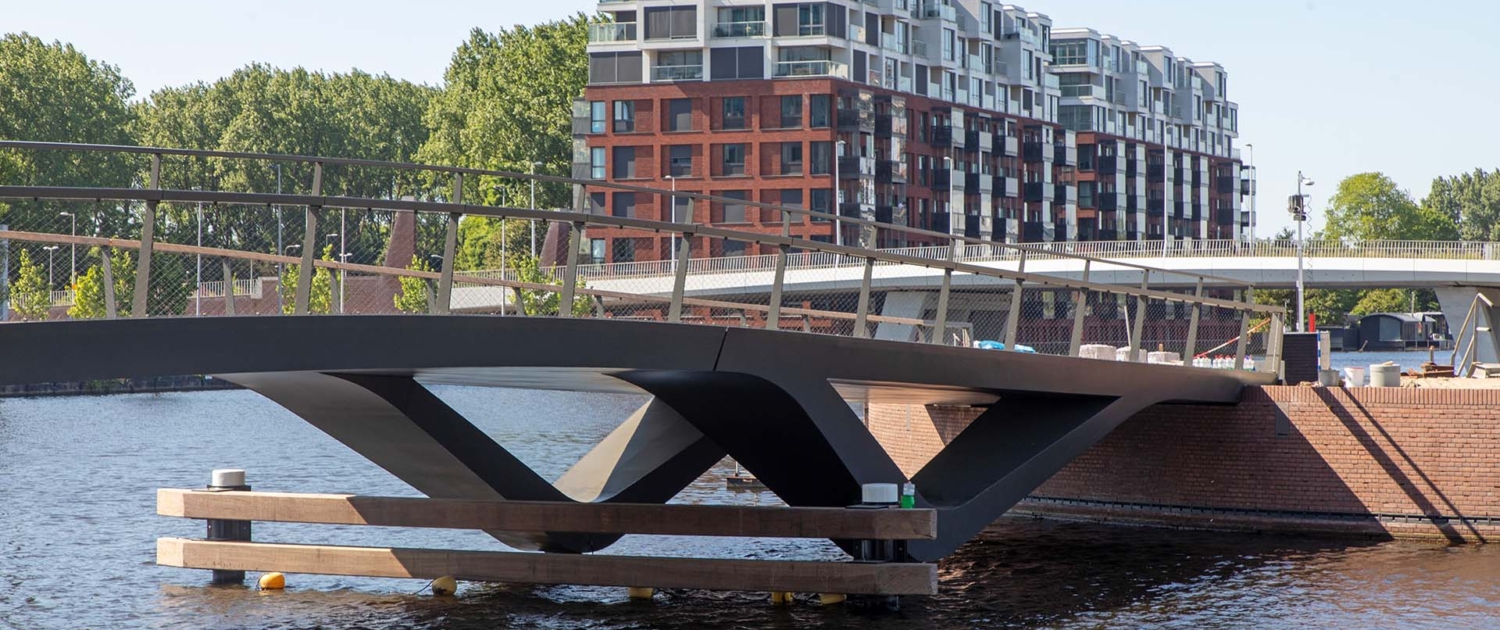
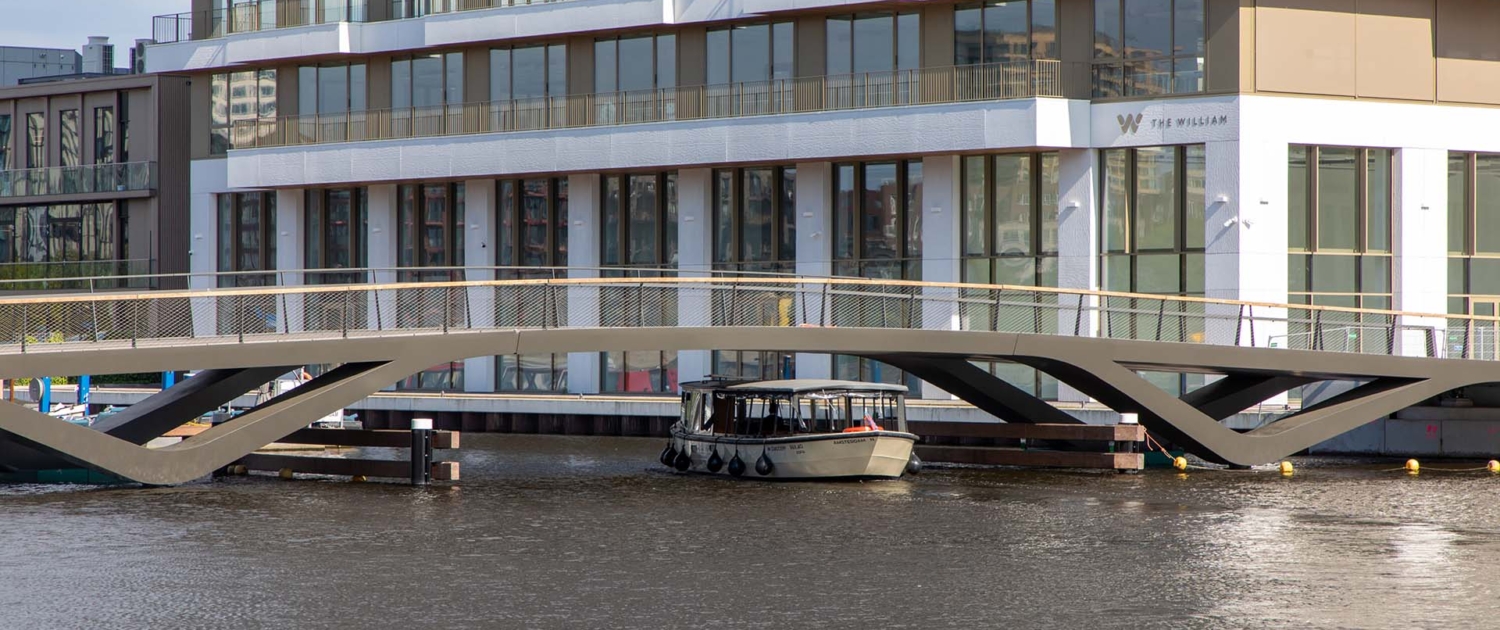
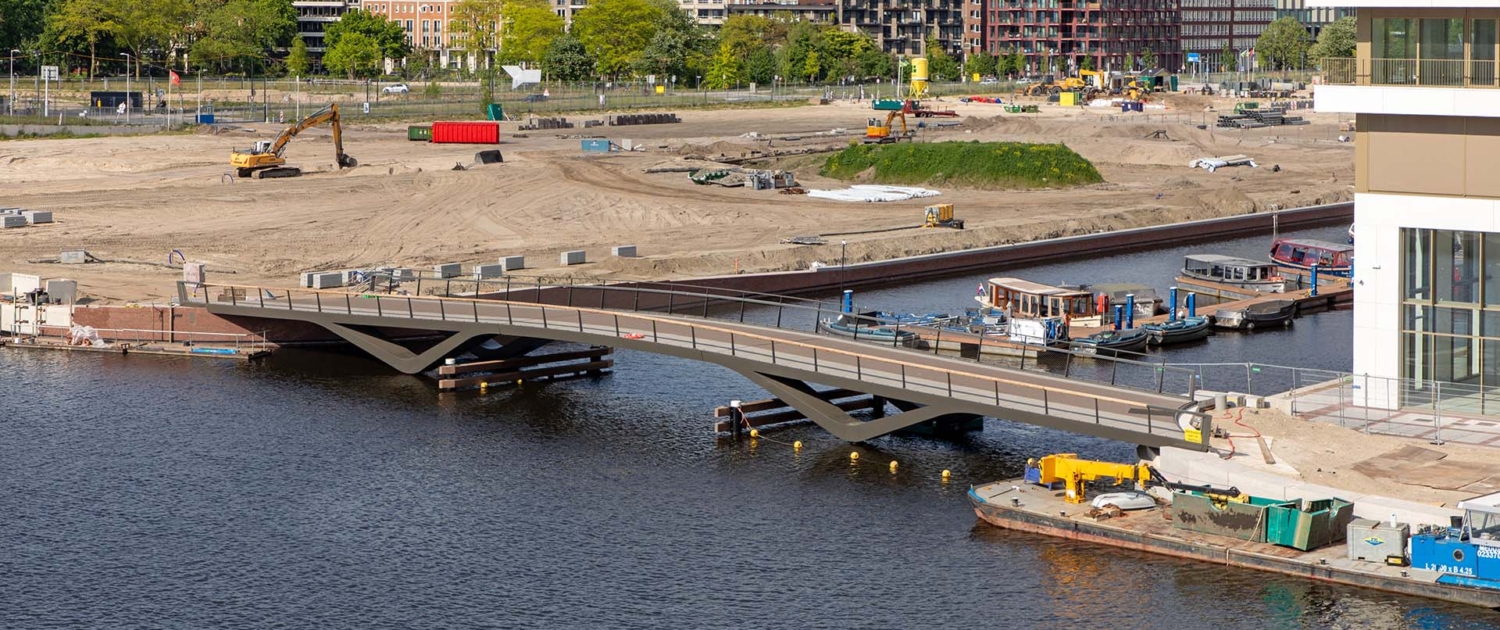
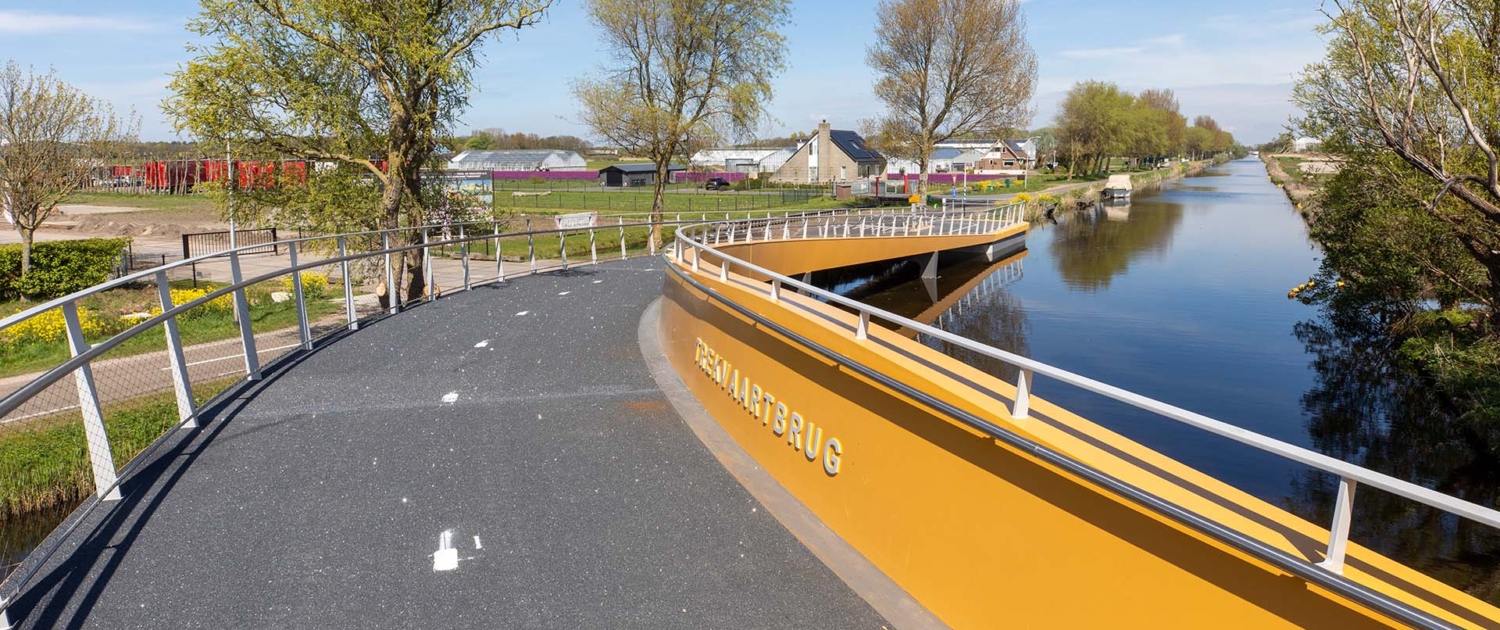
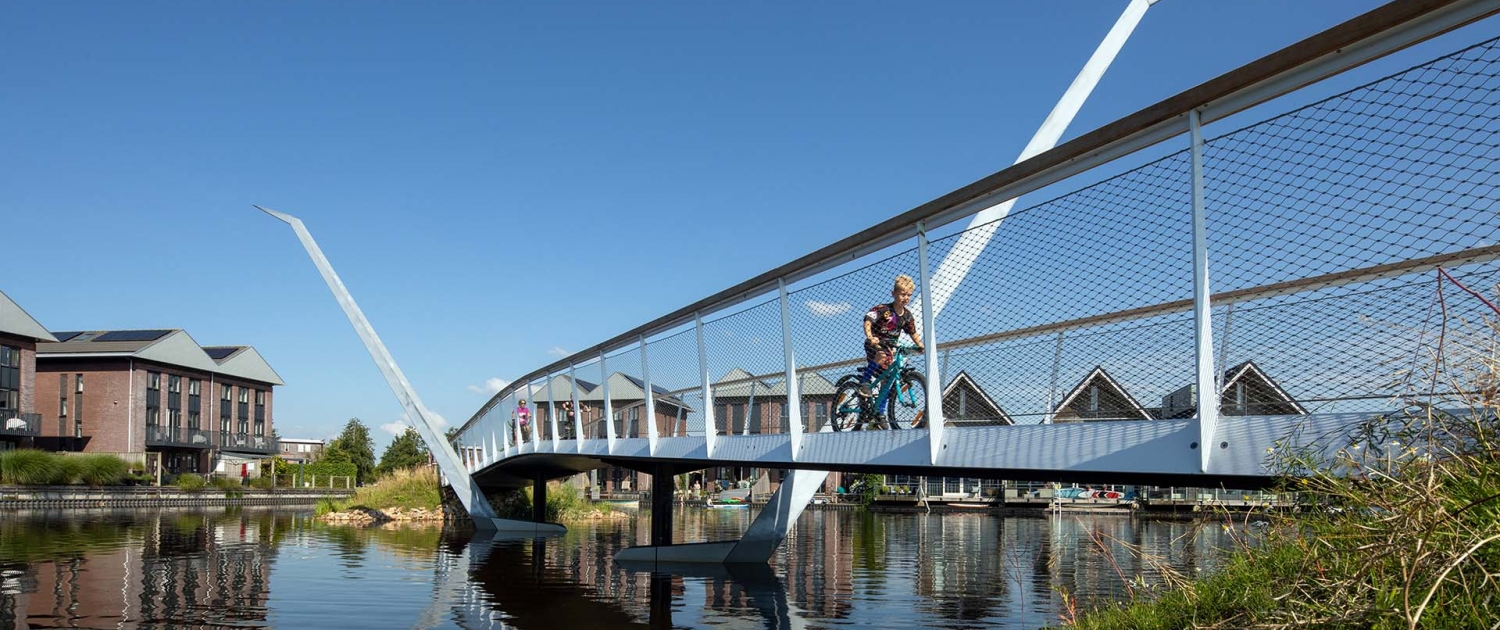
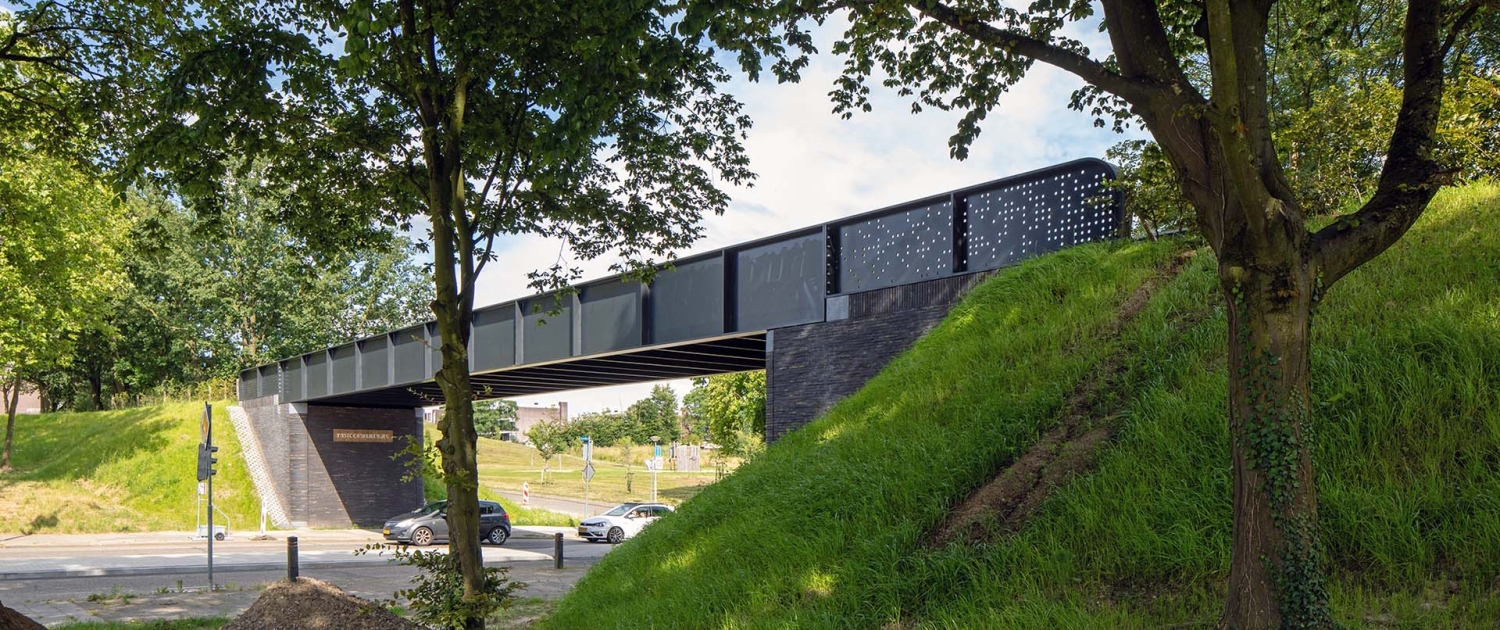
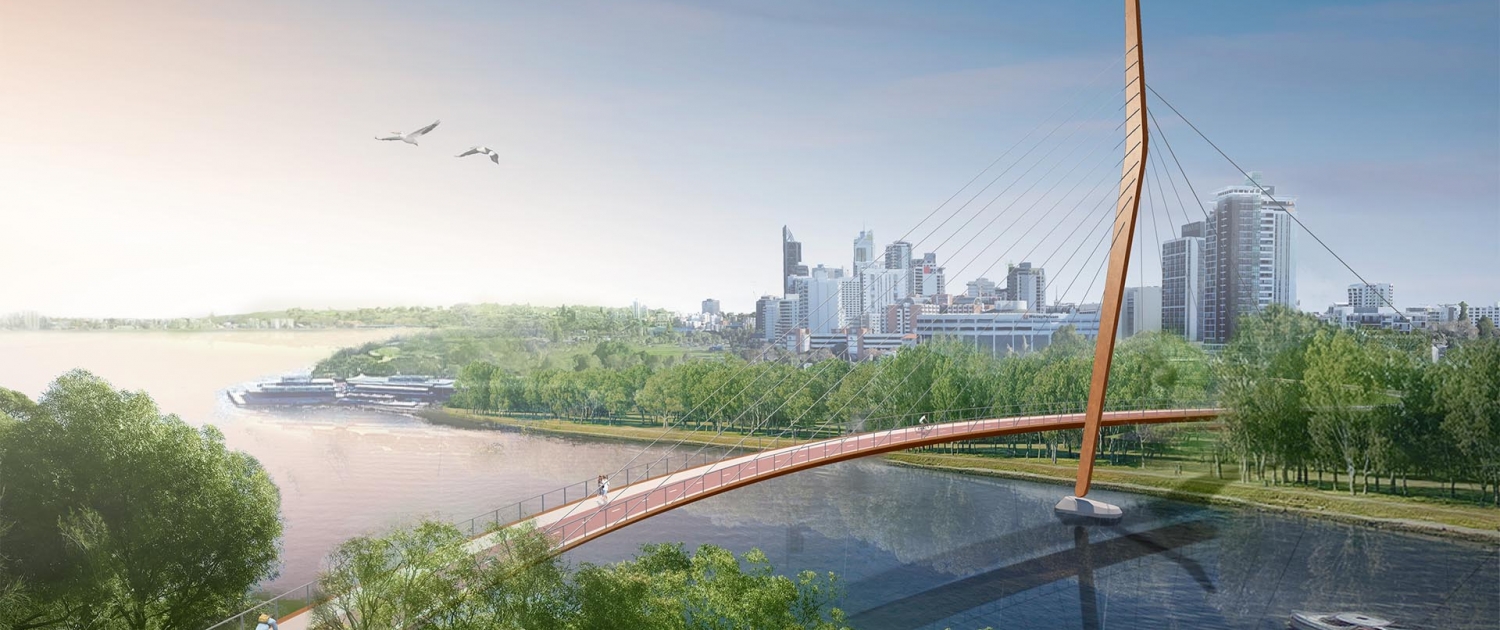
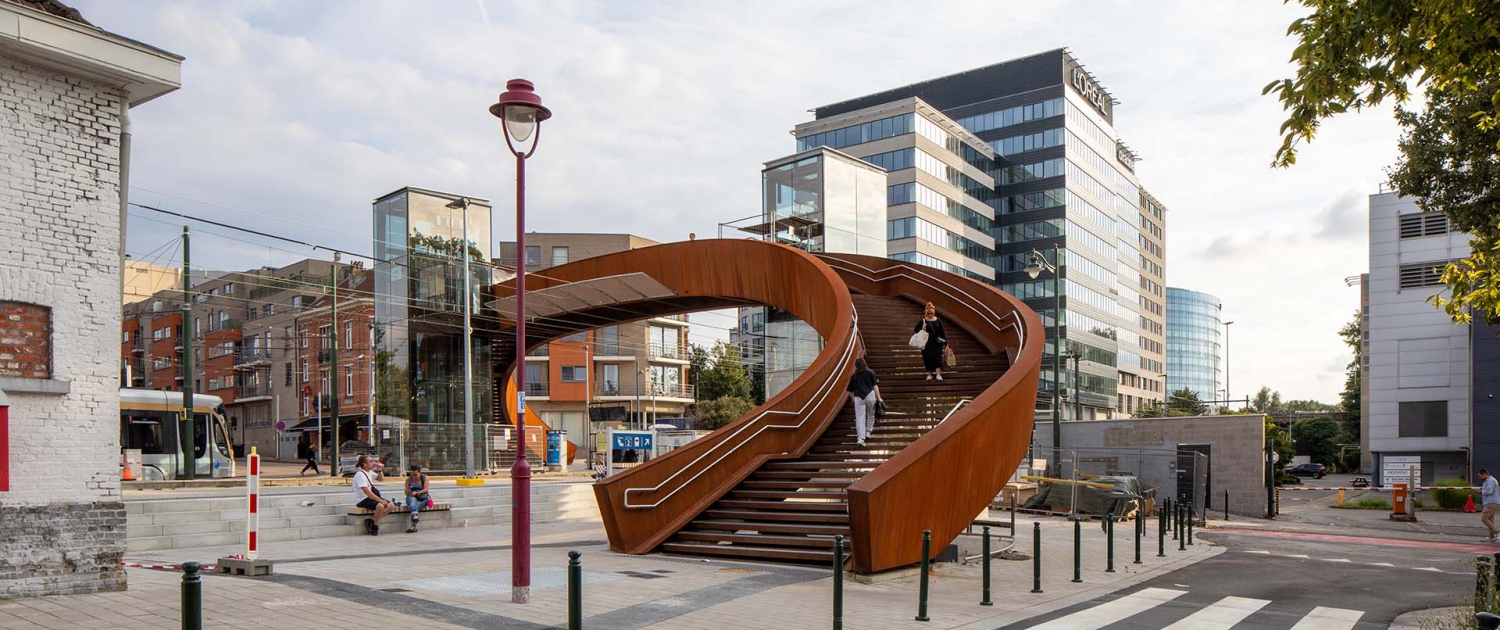
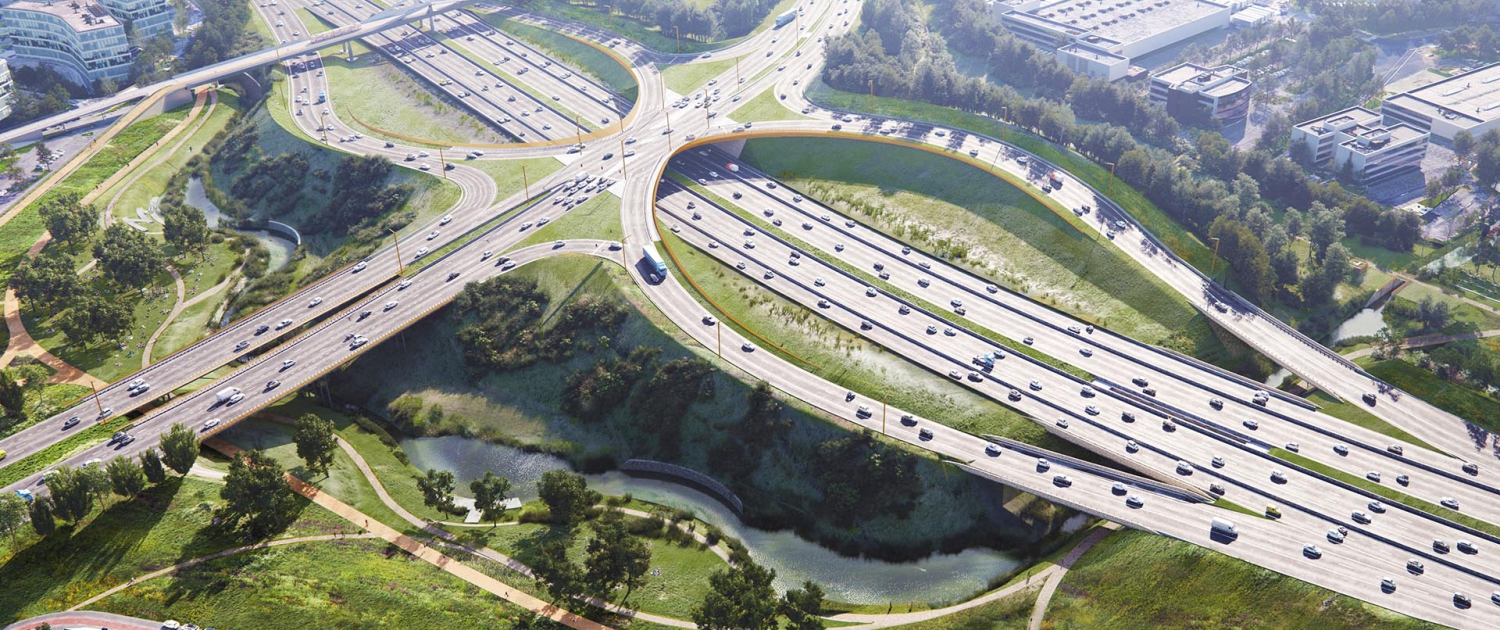 ipv Delft / image by Csaba Banati
ipv Delft / image by Csaba Banati